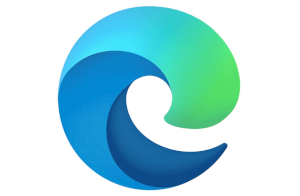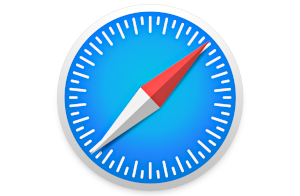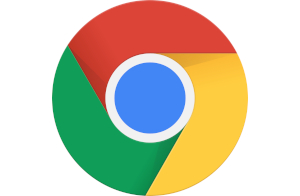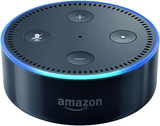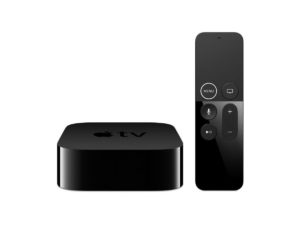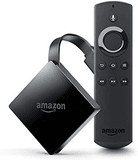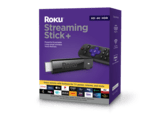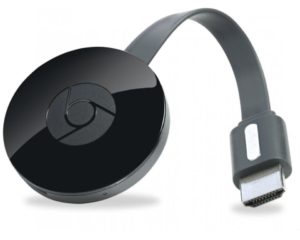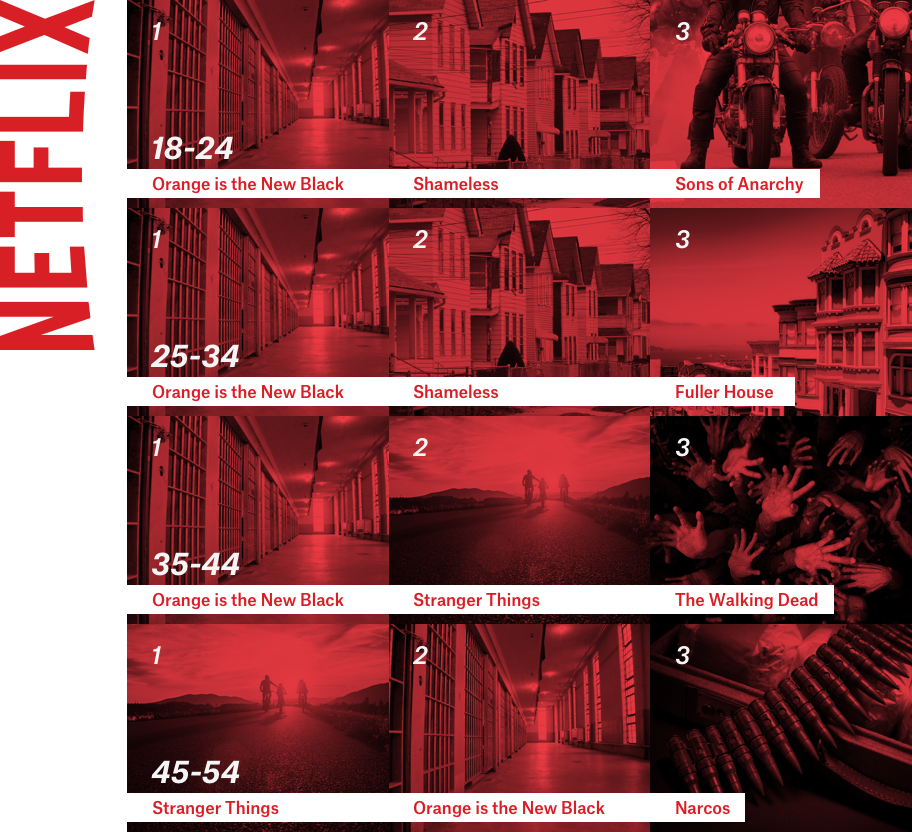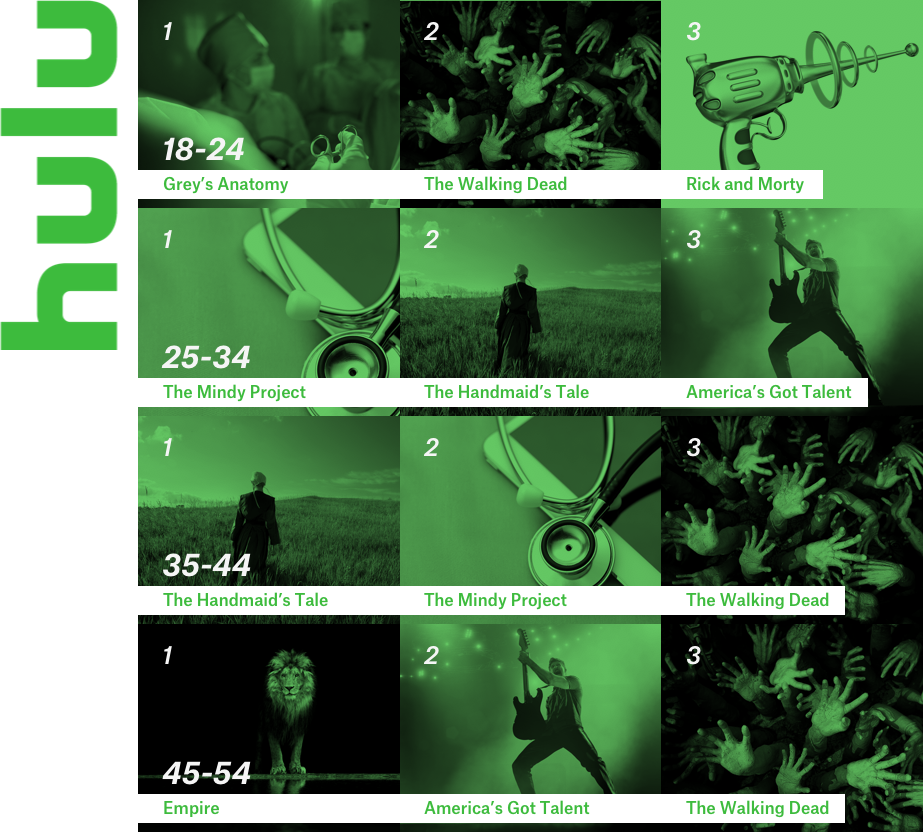Netflix is an awesome streaming service—so long as you have internet fast enough to use it.
According to Netflix, you can get away with internet speeds as low as 3Mbps to use the streaming app on your phone or TV. But that’s a lowball estimate. In reality, you need faster Wi-Fi if you plan to stream Netflix in the normal way most people do—while doing 10 other internet things simultaneously on your computer, phone, or tablet. (And don’t forget your kids or roommates streaming movies in the next room.)
A minimum of 25Mbps is a good internet speed for Netflix streaming. That ensures you can get all the way through an hour-plus of content in HD 720p resolution without the buffer gremlins coming for you. You’re even better off with 100Mbps if you have a family that likes to stream or if you have multiple devices in your home connected to the Wi-Fi. To really enjoy video streaming in 4K resolution, though, consider upgrading to a 200Mbps plan or faster.
Does your Wi-Fi have what it takes?
Take our speed test to see if your internet is fast enough to support your Netflix needs.
Download speed
000 Mbps
Upload speed
000 Mbps
Latency (ping)
00 ms
Jitter
00 ms
Netflix speed basics
Before we jump into the nitty-gritty, here’s a quick breakdown of three things you need to know about Netflix and internet speeds.
Three golden rules for Netflix internet:
- The more users and devices you have, the more internet speed you need.
- For 4K streaming, reduce buffering with a fiber-optic or gigabit cable plan.
- For slow connections and hotspots, keep it simple with the lower-resolution video of Netflix Basic.
Here are your minimum speed needs for Netflix
Netflix claims on its website that you can stream with speeds as low as 3Mbps. But that’s only if Netflix is the only app you’re using while you’re online—not an accurate reflection of how most netizens spend their time on the web these days.
The experts at HighSpeedInternet.com put together some realistic Netflix speed recommendations. You can easily get these speeds on pretty much any fiber, cable, 5G or even DSL internet plan.
| Netflix Plan | Minimum required speed* | Minimum recommended speed for optimal streaming | Sign up online |
|---|---|---|---|
| Standard with ads | 3Mbps | 25Mbps | Sign Up |
| Standard | 5Mbps | 100Mbps | Sign Up |
| Premium | 15Mbps | 200Mbps | Sign Up |
Recommendations from Netflix’s speed requirements page.
How Much Internet Speed Do I Need?
Est. Time: 60 seconds
Answer 6 questions and get a personalized internet speed recommendation!
How many people in your household use the internet/WiFi on a daily basis?
How many devices in your home connect to the internet, including tablets, gaming consoles, and smart devices?
How many people in your household work from home?
What video quality do you use for streaming TV and movies?
How intensely does your household participate in online gaming?
Does your household download large files from the cloud or via the internet?
Our experts say: The same principles apply to all video streaming apps
Even if you have individual Wi-Fi speed needs for other platforms like Paramount+, Max, Apple TV, or YouTube TV, the same rules apply. You want ample speeds to support a variety of users and tasks, and you want to be thrifty with pricing and video resolution on slower Wi-Fi.
What do you need to stream Ultra HD 4K movies on Netflix?
Many households need speeds of 200Mbps or faster to facilitate watching movies in Ultra HD 4K resolution on Netflix.
4K resolution gives you images in awe-inspiring detail, enhancing your experience for the sweeping cinematic grit of All Quiet on the Western Front or the lush splendor of a nature docuseries like Our Great National Parks. Nothing beats it, especially when you have a big screen.
The problem? 4K uses up a lot of broadband speed. Like, A LOT. Streaming in 4K also puts a massive dent in your monthly data allotment.
Here’s a breakdown of the scary stats:
- 4K needs 15Mbps minimum speeds for a single user to stream Netflix smoothly—3X faster than what you need to stream video in Full HD 1080p resolution.
- Watching a two-hour film in 4K consumes a whopping 16GB per hour—4X the amount of data that you use streaming video in HD.
Get fiber internet or a gigabit cable plan for the best 4K performance
You basically need supercharged internet to keep a 4K stream flowing without it getting bogged down by the spinning wheel of death. But you can bulk up your broadband speed with a fiber internet plan. Fiber gives you the fastest and most reliable type of internet connection, and even baseline plans get you super-smooth speeds.
Best internet plans for 4K video streaming
| Plan | Price | Speed | Order online |
|---|---|---|---|
| AT&T Internet 300 | $55.00/mo.* | 300Mbps | View Plan |
| Verizon Fios Internet 500/500 | $69.99/mo.† | 500Mbps | |
| Google Fiber | $70.00/mo.‡ | 1,000Mbps | View Plan |
| Xfinity Gigabit | $60.00–$70.00/mo.§ | 1,000Mbps | View Plan |
Read disclaimers.
Find fast internet for smooth streaming
Need a killer Wi-Fi plan to binge Better Call Saul? Run a search with your zip code below to see what internet providers and plans are available in your area.
What if you have slow internet? Never fear—you can still watch Netflix
To really get the most out of Netflix these days, it seems like you need a fancy internet package. Netflix’s Premium plan is designed for a household with multiple users and a demanding taste for 4K resolution—but, wow, does that plan cost a pretty penny, and you need extra-fast internet to support it.
Does that mean the party is over for Netflix when you’re on a budget? No, of course not. Just pick a Netflix plan that doesn’t bust your wallet in half—we recommend Netflix Basic for manageable 720p resolution, which works great over slower connections while still giving you a quality video. And sign up for a budget internet plan to go with it from our sweet recommendations below.
If you want, you can lower your resolution even more. That’s something you may need to do if you’re streaming video over a hotspot. As convenient as mobile hotpots are, they come with strict internet data limits that can put a serious damper on your Netflix usage if you’re not careful. Watch a few too many movies in HD or 4K and you can use up $90 worth of data in a day.
Best internet plans for budget Netflix users
| Plan | Price | Speed | Order online |
|---|---|---|---|
| Astound Broadband 300Mbps Internet | $20.00–$35.00/mo.* | 300Mbps | |
| Xfinity Connect More | $25.00/mo.† | 200Mbps | View Plans |
| T-Mobile 5G Home Internet | $60.00/mo.‡ ($40.00/mo. w/ Go5G Plus or Magenta MAX) | 72–245Mbps | View Plans |
| Verizon 5G Home Internet | $50.00/mo.§ ($25.00/mo. w/ Verizon Unlimited Plus) | Up to 300Mbps |
Read disclaimers.
Can you stream Netflix with satellite internet?
Yes, you can definitely stream Netflix with satellite internet. But satellite has very slow speeds and (often) extremely limited data caps, so you’ll want to reduce your video resolution to the lowest-possible setting to get the most out of your Netflix experience. The image quality isn’t as nice, but low resolution keeps you from burning through a month’s worth of data in a matter of hours.
Pro tip—Get more streaming plan recommendations
Take a look at our guide to the best internet for streaming for a breakdown of top Wi-Fi plans to meet your Netflixing needs.
Here’s how to adjust the video resolution on your Netflix app
If your Netflix streaming falls prey a bit too often to buffering and slow load times, then you may need to adjust the video settings on your app to reduce the need for long load times and buffering. Lowering video resolution also helps you reduce data usage, which is crucial if you’re worried about your data cap.
Unless instructed otherwise, Netflix automatically chooses a video resolution based on your plan and connection speed. To reduce data usage and buffering, set the resolution to Medium or Low. Here’s how to do it:
On desktop:
Step 1: Sign in from your browser.
Step 2: Click your profile on the Who’s Watching? screen.
Step 3: Click Account in the drop-down menu that appears when you move your cursor over the Profile section in the top right-hand part of the screen.
Step 4: Select the profile you want to edit in Profile & Parental Controls.
Step 5: Go to Playback settings and click Change.
Step 6: Choose between Auto, Low, Medium, or High in the section titled Data usage per screen.
On mobile:
Step 1: Sign in from your browser app.
Step 2: Tap Menu on the upper left.
Step 3: Tap Account.
Step 4: Tap the profile you want to edit in Profile & Parental Controls.
Step 5: Tap Change in Playback settings.
Step 6: Choose between Auto, Low, Medium, or High in the section titled Data usage per screen, then tap Save.
Choose the best Netflix plan in an age of post-password sharing
As Netflix cracks down on password sharing—forcing customers to pay an extra $7.99 a month for any users outside a subscriber’s household—it’s important to decide which plan is best for you.
The Standard and Premium plans are the best for most people, because they offer higher resolution and give you more flexibility in the number of screens you can stream on simultaneously.
But if you have slow internet—through a DSL or satellite connection, for example—you should consider going a cheaper route with the Standard ad with plans.
Netflix plan options
| Plan | Price | # of screens you can watch simultaneously | # of devices you can download the app to | Max video resolution | Sign up online |
|---|---|---|---|---|---|
| Standard with ads | $6.99/mo. | 0 | 1 | Full HD (1080p) | Sign Up |
| Standard | $15.49/mo. | 2 | 2 | Full HD (1080p) | Sign Up |
| Premium | $22.99/mo. | 6 | 6 | Ultra HD (4K) and HDR | Sign Up |
| Standard w/extra member slots | $23.48/mo.* | 2 + 1 | 2 + 1 | Full HD (1080p) | Sign Up |
| Premium w/extra member slots | $30.98/mo.† | 6 + 2 | 6 + 2 | Ultra HD (4K) and HDR | Sign Up |
FAQ
What upload speed is good for Netflix?
An upload speed of 3Mbps or faster is good for Netflix. In general you don’t need to worry about upload speeds with Netflix, since video streaming primarily depends on download speeds. It’s primarily important to have fast download speeds.
Disclaimers
Best internet plans for 4K Netflix streaming (return to table)
Data effective 6/7/23. Offers and availability may vary by location and are subject to change.
*Price after $5/mo Autopay & Paperless bill discount (w/in 2 bills). Plus taxes & fees. Monthly State Cost Recovery Charge in TX, OH, NV applies. One time install chrg may apply. Ltd. avail/areas.
†Price per month with Auto Pay & without select 5G mobile plans. Fios plan prices include taxes & fees
‡Plus taxes and fees. Upload/download speed and device streaming claims are based on maximum wired speeds. Actual Internet speeds are not guaranteed and may vary based on factors such as hardware and software limitations, latency, packet loss, etc.
§For 24 months. No term contract. Includes $10/mo automatic payments and paperless billing discount. Taxes and equipment not included.
Best internet plans for budget Netflix users (return to table)
Data effective 6/7/23. Offers and availability may vary by location and are subject to change.
*24 Month Internet Pricing. No contract required. Equipment priced separately. Includes $5 discount for 12 months w/ ebill & autopay. Experienced speeds may vary. New residential customers only.
†For 24 months. No term contract. Taxes not included. Includes $10/mo automatic payments and paperless billing discount.
‡w/ Auto Pay. Regulatory fees included in monthly price for qualified accounts. See full terms.
§w/ Auto Pay. Available in select areas.
To get paramount performance out of Paramount+, you need decent internet speeds.
Aim to get download speeds of at least 25Mbps per person in your household to ensure smooth streaming when you cue up your favorite movie or TV series on Paramount network’s streaming platform. So if you have four people in your household, an internet speed of 100Mbps is right on the money.
Internet speed is crucial to a good viewing experience, because streams with video resolution of 1080p and 4K take up a lot of bandwidth. Still, everyone’s speed needs are different. Take a look at our guide below to get the full look at the best internet for Paramount+, including the best internet providers to pick from.
Is your Wi-Fi fast enough?
Take our speed test to see if your internet is fast enough to support your Paramount+ needs.
Download speed
000 Mbps
Upload speed
000 Mbps
Latency (ping)
00 ms
Jitter
00 ms
Paramount+ speed basics
Although you’re technically capable of watching Paramount+ with speeds as low as 4Mbps, you want to factor in the totality of your internet usage when deciding the speeds you need to enjoy all the content on the Paramount network.
Many people tend to surf online with their phones or tablets while watching stuff on their smart TVs, and many households are home to multiple users who may all log into the same streaming service on separate devices. (Think: You’re enjoying The Lost City while your kids have PAW Patrol on in the next room.)
To get the best performance out of Paramount+, you should aim to set aside a chunk of bandwidth per every user in your household. If you have 100Mbps for a family of four, that gives you 25Mbps each—that’s adequate speed to cover all your streaming (and gaming and studying and Zooming) needs. Consider bulking up these speeds to 50Mbps per person or more if you also regularly do bandwidth-guzzling things like hosting Twitch livestreams or uploading influencer content to YouTube.
Three golden rules for Paramount+ streaming:
- The more users and devices you have, the more internet speed you need.
- For 4K streaming, reduce buffering with a fiber-optic or cable internet plan.
- For slow connections and hotspots, save money and reduce buffering with the Ad-Free or With Ads plan.
Here are your minimum speed needs for Paramount+
According to Paramount+, you need at least 4Mbps speeds to stream content on its platform. That’s enough to support a shoddy 480p stream on one device at a time, but the reality is you need significantly faster speeds if you want to stream on multiple devices at once or do other things online while streaming. You also need faster speeds to support 1080p or 4K video quality.
| Paramount+ plan | Video formats | Minimum required speed* | Minimum recommended speed for optimal streaming | Sign up online |
|---|---|---|---|---|
| Paramount+ Essential (with ads) | 1080p, 4K | 4Mbps | 100Mbps | Sign Up |
| Paramount+ with SHOWTIME (no ads) | 1080p, 4K, Dolby Vision, HDR10 | 4Mbps | 100Mbps | Sign Up |
Recommendations from Paramount+’s speed requirements page. Cancel at any time. Free trials are for new subscribers only.
Our experts say: The same principles apply to all video streaming apps
Even if you have individual Wi-Fi speed needs for other platforms like Netflix, Max (formerly HBO Max), Apple TV, or YouTube TV, the same rules apply. You want ample speeds to support a variety of users and tasks, and you want to be thrifty with pricing and video resolution on slower Wi-Fi.
What speed do you need to stream movies in 4K, Dolby Vision, or HDR10?
You need much faster speeds than normal to stream video in 4K, Dolby Vision, and HDR10 video formats. In most cases, Paramount’s purported minimum of 4Mbps simply doesn’t cut it. Instead we recommend at least 50Mbps per person, if not more.
Paramount+ offers select TV shows and movies in these three premium video formats. They give you much better video resolution, greater depth, striking contrast, and a carnival of color—vastly improving your viewing experience for the high-flying fighter jet scenes in Top Gun: Maverick and the fast-paced excitement of Paramount’s live sports broadcasts.
But you’re going to need premium internet to match premium video quality—and to do that we recommend getting a fiber or fast cable internet plan.
Get fiber internet or a fast cable plan for the best 4K performance
Fiber internet gives you incredibly fast speeds over a reliable connection. Not only is it ideal for streaming, but it’s also excellent for gaming and working from home.
Even a basic fiber plan gives you ample bandwidth to cover a range of activities—including streaming on multiple devices at once. Best of all, fiber plans often cost as much as (or even cheaper than) cable and DSL plans with slower speeds. That means you’ll have more money to set aside for streaming subscriptions and an upper-tier Paramount+ plan.
If you can’t get fiber internet, cable internet comes in second place as an ideal pick. Cable providers have come a long way in improving their network speeds, and a cable internet plan gives you excellent download power for all the streaming you like.
Best internet plans for 4K video streaming
| Plan | Price | Speed | Order online |
|---|---|---|---|
| AT&T Internet 300 | $55.00/mo.* | 300Mbps | View Plan |
| Verizon Fios Internet 500/500 | $69.99/mo.† | 500Mbps | |
| Google Fiber | $70.00/mo.‡ | 1,000Mbps | View Plan |
| Xfinity Gigabit | $60.00–$70.00/mo.§ | 1,000Mbps | View Plan |
Read disclaimers.
Find fast internet for smooth streaming
Need a killer Wi-Fi plan to binge Yellowjackets? Run a search with your zip code below to see what internet providers and plans are available in your area.
What if you have slow internet? Never fear—you can still watch Paramount+
Paramount+ still works even if you have slow internet—you just don’t get the same video quality as you would on a top-speed Wi-Fi plan.
When you’re watching content on Paramount+, the platform automatically adjusts the video resolution based on the capabilities of your home internet. A cheaper plan means lower speeds; to compensate, your app adjusts to a lower video resolution, either HD (720p) or even SD (480p). The video still can look good that way, but you’re not as likely to enjoy full 4K or Dolby Vision capabilities, which may put a damper on visually-striking movies.
Best internet plans for budget Paramount+ users
| Plan | Price | Speed | Order online |
|---|---|---|---|
| Astound Broadband 300Mbps Internet | $20.00–$35.00/mo.* | 300Mbps | |
| Xfinity Connect More | $25.00/mo.† | 200Mbps | View Plans |
| T-Mobile 5G Home Internet | $60.00/mo.‡ ($40.00/mo. w/ Go5G Plus or Magenta MAX) | 72–245Mbps | View Plans |
| Verizon 5G Home Internet | $50.00/mo.§ ($25.00/mo. w/ Verizon Unlimited Plus) | Up to 300Mbps |
Read disclaimers.
Can you stream Paramount+ with satellite internet?
You can definitely stream Paramount+ when you have a satellite internet plan, but you won’t get the same video quality as usual. You also need to be mindful of how much data you use. Satellite internet comes with strict data limits, and you can easily burn through a month’s supply of data in a couple days if you’re not careful.
Check with your satellite internet provider to see how much data you get and use the Armstrong data calculator to budget out how much you can watch on Paramount+ every day before burning through your data limit.
Pro tip—Get more streaming plan recommendations
Take a look at our guide to the best internet for streaming for a breakdown of top Wi-Fi plans to meet your streaming needs.
Here’s how to adjust the video resolution on Paramount+ app downloads
There is no way to manually adjust Paramount+ video quality on a browser or TV app, but you can manually switch between different resolutions for video downloads on Paramount’s cell phone app. Here’s how.
Step 1: Open the Paramount+ app.
Step 2: On the Paramount+ homepage, tap the More menu button in the bottom-right corner of the screen.
Step 3: Tap Settings and scroll to Download Video Quality.
Step 4: Choose between High Definition or Standard Definition.
Choose the best Paramount+ plan
Parmount+ has two plans to choose from: Essential and with SHOWTIME. The Essential plan costs only about $6 a month, but it comes with ads. The version with SHOWTIME costs $12 a month, doesn’t have ads, and, of course, includes a ton of extra content from SHOWTIME.
The Paramount+ with SHOWTIME plan is the best deal overall, since it comes with an extra service while costing a bit less than the premium plans of a lot of other streamers. But stick with Essential if you want to save some money—a few ads while watching movies is a small price to pay for great value.
FAQ
Does Paramount+ have live TV?
Yes, Paramount+ offers a lot of live TV options.
What is the difference between Paramount and Paramount+?
Paramount is the parent company of Paramount+. The former is an international media conglomerate that produces movies, TV shows, TV networks, and streaming content. Paramount+ gives you access to hundreds of movies and thousands of TV shows that fall under the Paramount brand.
What's the best router for streaming Paramount+?
We’ve tested dozens of standalone routers and mesh systems. Check out our lineup of the best routers for streaming if it’s time for an upgrade or you need better Wi-Fi speeds to support Paramount+.
I have the best internet and equipment. Why is Paramount+ so choppy?
If you’re facing streaming issues with Paramount+, visit our troubleshooting hub and use our guides to squeeze out every ounce of speed you can get from your Wi-Fi and internet connections.
What is the best VPN for using Max?
NordVPN is the best VPN to use if you’re streaming content on platforms like Max. As we write in our best VPNs guide, NordVPN enjoys a sterling reputation for safety and security. The app includes dedicated servers to let you access geo-specific versions of many major streaming platforms, and it doesn’t put too drastic of a dent on your bandwidth when you’re signed on.
We also recommend ExpressVPN, Windscribe, and Cyberghost VPN.
Disclaimers
Best internet plans for 4K streaming (return to table)
Data effective 7/7/23. Offers and availability may vary by location and are subject to change.
*Price after $5/mo Autopay & Paperless bill discount (w/in 2 bills). Plus taxes & fees. Monthly State Cost Recovery Charge in TX, OH, NV applies. One time install chrg may apply. Ltd. avail/areas.
†Price per month with Auto Pay & without select 5G mobile plans. Fios plan prices include taxes & fees
‡Plus taxes and fees. Upload/download speed and device streaming claims are based on maximum wired speeds. Actual Internet speeds are not guaranteed and may vary based on factors such as hardware and software limitations, latency, packet loss, etc.
§For 24 months. No term contract. Includes $10/mo automatic payments and paperless billing discount. Taxes and equipment not included.
Best internet plans for budget users (return to table)
Data effective 7/7/23. Offers and availability may vary by location and are subject to change.
*24 Month Internet Pricing. No contract required. Equipment priced separately. Includes $5 discount for 12 months w/ ebill & autopay. Experienced speeds may vary. New residential customers only.
†For 24 months. No term contract. Taxes not included. Includes $10/mo automatic payments and paperless billing discount.
‡w/ Auto Pay. Regulatory fees included in monthly price for qualified accounts. See full terms.
§w/ Auto Pay. Available in select areas.
More people watch video over the internet than over broadcast television.1 Good quality streaming is a basic expectation most people have for their internet service, but it’s one that remains elusive to satellite internet customers.
If you’ve dealt with slow, grainy video or massive data overage charges in the past, you might have given up on trying to watch online video at all. Fortunately, there are several ways for satellite customers to access high-quality video without incurring outrageous data rates. Read on to see if any of these tips and tricks work for you.
Best satellite internet for streaming: Starlink
Data as of 7/5/2023. Offers and availability may vary by location and are subject to change.
*Plus hardware, shipping & handling fees, and tax. Fully refundable. Depending on location, some orders may take 6 months or more to fulfill.
If you want to stream video over satellite, Starlink is the best way to do it. Until recently, even the lowest speeds are plenty for viewing 4K video content. Starlink has since dropped the low end of their estimated speeds below the suggested minimum for 4K, though your streaming app might be able to buffer through those unexpected drops as long as speeds don’t loiter around the 20s.
The biggest advantage that Starlink has over the competition is unlimited data. Streaming video is one of the most data-intensive activities people engage in, so even plans with high data caps can run through your monthly allowance with just a single streaming device. Starlink’s unlimited data gives you the peace of mind to watch as much as you want without worrying about your data running out.
For more information, check out our in-depth Starlink review.
 Pros:
Pros:
- Fastest satellite download speeds
- No data caps
 Cons:
Cons:
- High upfront cost
- Long waits for equipment
Popular satellite providers
| Provider | Satellite speeds up to | Introductory price | Order online |
|---|---|---|---|
|
| 20–100 Mbps | $120.00/mo.* | |
| 50–150 Mbps | $99.99–$119.99/mo.† | ||
 | 50-100 Mbps | $49.99–$79.99/mo.‡ |
Data as of 7/5/2023. Offers and availability may vary by location and are subject to change.
*Plus hardware, shipping & handling fees, and tax. Fully refundable. Depending on location, some orders may take 6 months or more to fulfill.
†Prices and availability vary by location. Installation fees, monthly equipment lease fees, and taxes may apply. After 100 GB of High-Speed Data usage, you still have unlimited access to Standard Data, which may result in slower speed.
‡Offer for 12 months. Service plans require a 24-month commitment. Equipment Lease or Purchase fees extra. Service plans require a 24-month commitment. Equipment Lease or Purchase fees extra.
Viasat offers plans with higher speeds, which is good for those who want to stream higher quality video or have multiple devices streaming at once. The tradeoff is that higher quality burns through data even faster, so unless ultra-high definition movie night is only a monthly indulgence, you’ll have to invest in a lot of extra data.
Hughesnet offers only one speed for all its plans, but it’s enough to stream movies and TV—at least in theory. When we tested Hughesnet plans first-hand, we found that it couldn’t maintain enough speed to stream most content. The most we could manage were YouTube videos at 480p resolution, which is less than most people expect from their phones.
If the amount of data you use varies considerably from month to month, Hughesnet’s simple, flexible pricing model could save you some money.
How much speed do I need to stream video?
Streaming video can use a lot of bandwidth, but it depends heavily on the quality of the picture and the number of devices that are streaming at the same time. Different video services also have different bandwidth recommendations, though they’re usually pretty similar. Watching high definition 4K video on a single device, for example, usually requires about 25 Mbps of download speed, which is technically doable over satellite.
For a more detailed breakdown of speed requirements for different platforms, check out our guide to How Much Speed Do I Need to Stream Video.
One nice thing about video streaming services like Netflix and Hulu is that the software itself is really good at buffering your signal. When you’re watching a movie, your device downloads the data a few seconds ahead of what’s actually playing on the screen. That means if the speed of your connection fluctuates or there’s a brief disruption, your movie keeps playing smoothly off that pre-downloaded data without any pauses.
Naturally, live content can’t do this as well without putting a huge delay between the live content and when it appears on your screen, so you’re more likely to encounter buffering issues watching a Twitch stream or a live newscast than with pre-recorded content.
Streaming and data caps
Streaming video over satellite isn’t an ideal situation. While most satellite plans meet the speed requirements for streaming video, data caps usually pose the bigger problem. Satellite data caps are incredibly low compared to other types of internet. Although a plan with 50 GB of data might seem like a lot, you could easily run through four or five GB of data for one movie night.
If watching a show in the evening is part of your daily routine, a 50 GB data plan might only get you halfway through the month. Throw in a couple of kids that want to watch Bluey on their iPads every day after school and you could find yourself running out of data in a matter of days, which isn’t very practical.
Choose unlimited data
The best choice for anyone who watches a lot of online video is to choose an internet plan that offers unlimited data. Right now, the only satellite service that does this is Starlink , making it the clear choice for rural Netflix fans. Starlink speeds are also high enough that you shouldn’t have any bandwidth problems, even if streaming on multiple devices simultaneously.
Lower your picture quality
Although it’s not the most visually appealing option, lowering your video resolution drastically reduces the amount of data it uses. Even just dropping the quality from 4K UHD to HD can make your data last around five times longer.
If you watch everything in standard definition, you could probably watch video every day and still make it through the whole month on an average data plan. You can change the resolution of videos on a service like Netflix through its settings menu.
This is also the same principle behind how things like Video Data Saver work. By automatically throttling your speed when you watch a video, it forces lower resolution playback that uses less data.
Get satellite TV
Getting a satellite TV plan like DirecTV in addition to your satellite internet may sound like an expensive solution, but in some situations, it could actually save you money. Unlike satellite internet, satellite TV prices depend primarily on the number of channels you get, not how much data you use or how much time you spend using it. For those who watch video all day, every day, paying for a second satellite service could be cheaper than buying all the extra data needed every month to support your TV habit.
Of course, satellite TV works a lot differently from a streaming service, and if the channels you want only come in the most expensive packages, it may not be worth it. For some people, however, satellite TV can be a way to watch as much video as you want without worrying about how much data you’re using.
The bottom line: Streaming on satellite is tricky but doable
Traditional satellite internet services are not well designed for streaming video, but with a few data-saving tricks, you can make it work. Starlink presents an even better solution to the streaming problem by offering unlimited data in areas with access to only satellite service.
Streaming on satellite FAQ
Can you stream video with satellite internet?
Yes, though streaming video over satellite internet can use up your monthly data allowance very quickly. Keep an eye on your data use and watch in lower resolutions to keep below your data cap.
Is satellite internet good for Netflix?
You can watch Netflix over satellite internet, but it uses a lot of data. Most satellite plans have low data caps, so if you are a heavy Netflix user, it’s best to look for a plan that offers unlimited data.
Sources
- Brad Adgate, Forbes, “Nielsen: Streaming Video Audience Share Is Higher Than Broadcast TV,” June 17, 2021. Accessed August 14, 2022.
-
Best for WindowsMicrosoft Edge
- Free
- Streams 4K Netflix content
- Adds web apps
-
Best for MacSafari
- Free
- Streams 4K Netflix content
- Supports extensions
-
Best for battery lifeOpera
- Free
- Includes a battery saver mode
- Has built-in social apps
Our pick: Which browser is best?
The best internet browser for streaming depends on the platform. Microsoft Edge is the only browser on Windows that can stream Netflix in Ultra HD (4K). Safari is your best bet on an Apple Mac with Big Sur (version 11) or newer, as it’s the only browser that can stream Netflix in 4K.
Do you have the speeds you need to stream 4K content?
Enter your zip code below to find a faster plan in your area.
The 5 best browsers for streaming
- Best for Windows: Microsoft Edge
- Best for Mac: Safari
- Best for battery life: Opera
- Best for location-restricted content: UR Browser
- Best alternative browser: Chrome
Compare browser availability and features
| Best for | Browser | Availability | Best features | Get it |
|---|---|---|---|---|
| Best for Windows | Microsoft Edge | Desktop, mobile | ● Streams Netflix in 4K ● Adds web apps | Get Microsoft Edge |
| Best for Mac | Safari | Desktop, mobile | ● Streams Netflix in 4K ● Supports extensions | Included on Apple devices |
| Best for battery life | Opera | Desktop, mobile | ● Includes a battery saver mode ● Has built-in social apps | Get Opera |
| Best for location-restricted content | UR Browser | Desktop | ● Includes a built-in VPN ● Has a minimal design | Get UR Browser |
| Best alternative browser | Chrome | Desktop, mobile | ● Syncs data across devices ● Has the fastest speeds | Get Chrome |
What should you look for in a browser for streaming?
You want a browser that’s fast. It needs to load quickly, react to input instantly, and display a fluid framerate. You don’t want a browser that turns your stream into a boring slideshow.
Second, a browser needs to support HTML5 video. That means the browser shouldn’t require risky plugins or extensions to stream media. Instead, it should rely on server-side code to create a safer “web app” that’s not installed as intrusive software on your device.
Best for Windows—Microsoft Edge
Free
Features
- Streams Netflix in 4K on desktop
- Uses Microsoft PlayReady DRM on desktop
- Supports dark modes and themes
Availability
- Desktop: Windows, macOS
- Mobile: iOS, iPadOS, Android
Base code
Data this browser collects from you
- Device ID
- Browsing history
- Diagnostics
We already know Microsoft Edge is one of the fastest browsers for Windows-based PCs. It ran neck-and-neck with Chrome in our testing, and it outranked Google’s browser in just one out of four tests. But Microsoft has one ace up its sleeve that Google doesn’t: Netflix in 4K.
Microsoft Edge is the only browser for Windows that streams Ultra HD (4K) content from Netflix. The media service signed a deal in 2010 to use Microsoft’s PlayReady DRM as its primary DRM technology.
The Chromium version of Microsoft Edge ships with Windows 10 and Windows 11. If you haven’t updated Windows in a long while and you’re still using the legacy version of Edge, upgrade Windows with the latest feature update or download the Microsoft Edge installer.
 Pros:
Pros:
- Streams Netflix in 4K
- Includes a built-in PDF viewer
 Cons:
Cons:
- Tests slower than Chrome in some cases
- Doesn’t have a Linux version
Best for Mac—Safari
Free
Features
- Streams Netflix in 4K on desktop
- Uses Apple FairPlay DRM
- Supports browser extensions
Availability
- Desktop: macOS
- Mobile: iOS, iPadOS
Base code
- Nitro, WebKit
Data this browser collects from you
- Device ID
- User ID
- Diagnostics
Safari is the best browser for Apple Macs, hands down. It outranked Chrome in two out of four browser benchmark tests, but it really blew away the competition in the MotionMark 1.2 test. It’s a graphics benchmark that showed just how tuned-in the browser was to our MacBook’s integrated graphics.
But like Microsoft Edge, Safari has an ace up its sleeve: support for Ultra HD (4K) streaming from Netflix. According to Netflix, Safari is the only browser on a Mac that can do so, while 4K streaming is locked to Microsoft Edge on Windows. However, you must have macOS Big Sur (Safari 14) or newer installed and a specific Mac with a T2 security chip to stream Netflix in 4K.
 Pros:
Pros:
- Streams Netflix in 4K on some Macs
- Has the fastest speeds on Mac
 Cons:
Cons:
- Lacks Windows and Android versions
- Offers limited extensions
Best for battery life—Opera
While we like to flaunt Opera as the coolest browser for built-in social features, it’s not the fastest browser on the planet. In our tests on Windows, it generally stayed in 3rd place while its performance fluctuated on our MacBook. However, Opera is probably best known for dialing itself back to conserve battery power.
Opera doesn’t hog resources like Chrome: it may use 400MB of memory versus Chrome’s 2GB with identical tabs open. It also includes a Battery Saver mode that can extend your laptop’s battery life on a single charge by up to 50%. This mode changes the JavaScript schedule so the CPU has less work, stops animations, reduces background tab activity, and makes adjustments to video playback.
You can switch this feature on by opening Settings (Windows) or Preferences (Mac), selecting Advanced listed on the left, selecting Features, and selecting the toggle next to Enable Battery Saver.
 Pros:
Pros:
- Has a battery saving mode
- Packs built-in social apps
 Cons:
Cons:
- Lacks Netflix 4K support
- Performs slower than Chrome
Best for location-restricted content—UR Browser
Free
Features
- Uses Google’s Widevine DRM on desktop
- Presents a minimal interface
- Includes a built-in VPN
Availability
- Desktop: Windows, macOS
Base code
Data this browser collects from you
- Device ID
- Location
- Diagnostics
The big selling point for streaming with UR Browser is its built-in VPN component. Opera has one too, but we already chose it as our favorite browser to stream on a battery. VPNs are ideal for online anonymity, preventing your internet provider and other third parties from tracking your online activities.
What this means to you is that your physical location is unknown. UR Browser sends your streaming request to a remote server, which in turn removes your information before transmitting the data to the destination. This anonymity allows you to stream previously unobtainable content locked to locations outside the US.
 Pros:
Pros:
- Focuses on security
- Provides a built-in VPN
 Cons:
Cons:
- Doesn’t have a mobile version
Opera vs. UR’s VPN: is there a difference?
Opera’s VPN is a proxy service. It encrypts only the transmission between the browser and Opera-owned SurfEasy’s servers, not your data or your internet connection. In contrast, UR Browser includes a full VPN client provided by OVPN, which protects your entire internet connection, not just the data going to and from the browser. However, UR’s VPN requires a subscription.
Best alternative browser—Chrome
Free
Features
- Uses Google Widevine DRM on desktop
- Synchronizes data across devices
- Supports a large extensions library
Availability
- Desktop: Windows, macOS, Linux, Chrome OS
- Mobile: iOS, iPadOS, Android
Base code
Data this browser collects from you
- User ID
- Device ID
- Location
- Audio data
And more (see App Privacy)
Chrome was the fastest browser on Windows in three out of four performance benchmarks, beating second-place contender Microsoft Edge. On Mac, it outperformed Safari in two out of four tests, making it a great alternative in terms of speed. It’s certainly not the best browser on a battery, so keep that in mind.
Unfortunately, Chrome streams Netflix in only 720p to prevent users from capturing and uploading high-quality copies to file-sharing sites—1080p if you’re on a Chromebook. Chrome uses Google’s software-based Widevine DRM, making it vulnerable to screen recording. In contrast, Windows and macOS Big Sur use hardware-based DRM that’s harder to crack, enabling higher resolutions.
 Pros:
Pros:
- Has the fastest speeds
- Supports Google services natively
 Cons:
Cons:
- Uses a lot of memory on desktop
- Collects lots of user data
Browser specs and features
Here are a few ingredients you need to keep in mind when you’re shopping for the best browser to stream Netflix, Hulu, Max, and other services.
Speed
You want a web browser that loads pages fast, is highly responsive, and doesn’t use too much system memory, which can slow your device to a crawl.
Presentation
A web browser should be easier to navigate—not overly clunky. For example, when we sit down on the couch and watch movies on a widescreen TV, we don’t want a distracting, flashy frame pulling our eyes away from the on-screen action. A web browser’s border should be just as invisible as the thin, boring bezels we have framing our favorite screens.
Security
Your personal security should always be a priority, so choose a web browser that updates regularly. There will always be holes in the code, and you want developers to patch those holes before hackers take notice. If a developer hasn’t updated its browser in months to a year, you probably shouldn’t use it.
Google releases a new version of Chrome every four weeks but distributes multiple “maintenance” fixes and tweaks in between.
Compatibility
A good rule of thumb is to use a browser that supports HTML5 video and audio. Most modern browsers do, so it’s not really a feature you need to hunt down when choosing the best browser for streaming. Instead, you need to think in terms of performance and a plugin-free experience.
Our verdict: use Microsoft Edge or Safari
While Netflix may not be your preferred streaming service, knowing which browser supports its 4K content is ideal—especially if you’re on the edge of your seat waiting for the next season of Stranger Things to arrive. In that case, Microsoft Edge for Windows and Safari for macOS Big Sur (and newer) are your only portals to Eleven and the gang in beautiful 4K.
Chrome is your runner-up in terms of speed. It’s currently the most popular browser on the planet, but we’re not keen on all the information Google collects. Streaming at 4K is presumably reserved for Chromecast Ultra devices to prevent viewers from distributing recorded content illegally.
FAQ about browsers for streaming
What is a virtual private network (VPN)?
A virtual private network is a service that creates an encrypted connection between you and the network’s private servers. Software on your device encrypts your data, establishes an encrypted connection, and sends your data to the remote server. In turn, the server decrypts and relays your data to the destination, but without any information that can identify you, like your IP address and geological location. Check out our suggestions of the best VPNs.
What is a proxy service?
A proxy service is a service that uses remote servers to mask your IP address. When you visit a website, your browser sends the request to a remote server. The remote server then removes all data that links back to you and passes the browser request to the destination. The remote server receives the destination’s response and forwards the data to your web browser.
However, a proxy service encrypts only the path between the browser and the remote server—it does not encrypt the actual data. In contrast, a VPN encrypts your device’s internet connection, not just the path between the browser and the remote server. Plus, a VPN encrypts the connection and the data, making it a better choice for complete privacy.
What is HTML5
HyperText Markup Language (HTML) is code that formats content on the internet. HTML5 is the latest version that removes the need for browser plugins like Flash, Java, and Silverlight. With HTML5, three components are at play: JavaScript to handle the interactive components, Cascading Style Sheets to dictate the layout, and HTML to piece it all together into the webpage you see on the screen.
HTML5 includes Encrypted Media Extensions, a platform that allows DRM-protected content to stream into a browser without the need for additional plugins. HTML5 includes the <video> element to embed a media player for video playback in web pages.
HTML5-based video uses the following formats:
- Theora (ogg)
- 264 (MP4)
- HEVC (MP4)
- VP8 (WebM)
- VP9 (WebM)
- AV1 (WebM)
Currently, Microsoft Edge is the only browser that supports all six formats.
What is Chromium
Chromium is an open-source codebase developed and maintained by Google. Developers can use this code to create a browser as-is or adapt the code to make a browser that also includes proprietary components. Chrome, Microsoft Edge, and Opera are three examples of browsers that are based on Chromium.
What is digital rights management (DRM)
Digital rights management is a means for all content creators and distributors to control how you use copyrighted digital material. It prevents individuals from installing stolen software or digitally recording a copyrighted movie streamed from across the internet to your PC.
In the case of the best browsers for streaming, services like Netflix and Hulu protect HTML5-based copyrighted content by encasing it in a DRM package. The content cannot be unpackaged without a key that’s transmitted separately to the browser.
Moreover, content providers support different DRM platforms. For example, Netflix uses Microsoft’s PlayReady platform to encrypt content for Microsoft Edge on Windows PCs. It uses Apple’s FairPlay Streaming platform to encrypt content for Macs, iPhones, and iPads. The resolution also depends on the client device’s underlying hardware.
Here are the main DRM platforms used for HTML5 video playback:
- Apple FairPlay
- Google Widevine
- Microsoft PlayReady
Generally, one web browser on one platform supports only one DRM platform. For example, Microsoft Edge on desktop uses PlayReady. The mobile version for iPhone and iPad uses Apple’s FairPlay platform instead.
The exchange between the browser and the service determines the DRM and playback resolution.
Did you know?
HDMI uses a form of DRM called High-Bandwidth Digital Content Protection (HDCP) to prevent unauthorized playback or digital copying.
Why are Microsoft Edge and Safari the only browsers that stream Netflix in 4K?
Netflix requires hardware-based video decryption that’s supported only by Microsoft Edge, the Netflix app for Windows, and Safari 14 (on certain Macs) to stream its 4K content.
Prior to streaming 1080p content (Full HD or FHD), the media industry used software-based DRM to protect their SD and HD copyrighted content. However, the decoded video was prone to leak into a computer’s general system memory pool shared by all software, allowing pirates to use screen recording tools to capture and share copyrighted content on the internet.
While many video streaming services still use software-based DRM on lower-resolution content, services like Netflix rely on hardware-based DRM to protect high-quality streams.
Streaming Netflix in 4K on Windows
Hardware-based video decoding on Windows PCs requires a capable processor or graphics chip. Here are the minimum software and hardware requirements you need to stream Netflix in 4K:
- Operating system: Windows 10 Anniversary Update (1607) or newer
- Integrated GPU: 7th-Gen Intel Core (Kaby Lake) or 1st-Gen AMD Ryzen (Zen) processor
- Discrete GPU (if a qualifying iGPU isn’t present): Nvidia GeForce GTX 1050 3GB or newer; AMD Radeon RX 400 or newer
- Display: 60Hz 4K (external must support HDCP 2.2)
- Browser: Microsoft Edge or the Netflix app for Windows
- Codec: HEVC extension (if it’s not already installed)
- Internet speed: 15Mbps or higher; Nvidia says 25Mbps or higher
Processors use a private section in your computer’s system memory as a scratchpad—this section usually isn’t accessible by anything other than the CPU. It decodes the video in this private area and then sends it all straight to the graphics chip to render each frame on your screen.
Overall, the difference is that hardware decodes video in a private room while software decodes in a semi-private room, making the latter susceptible to screen recordings.
Finding an Intel CPU’s generation is easy
You can determine an Intel processor’s generation by the part number. Look for the first number immediately after the hyphen. For example, the Intel Core i5-1038NG7 used in the last Intel-based MacBook Pro 13 is a tenth-generation chip.
Streaming Netflix in 4K on Macs
Apple uses its own DRM platform called FairPlay Streaming. The requirements to stream 4K content from Netflix on a Mac are different from what’s required from Windows-based PCs. In a nutshell, a specific processor or graphics chip isn’t necessary to support Netflix in 4K. Instead, the 4K decoding falls to the standalone T2 security chip. Here are the requirements:
- Operating system: macOS Big Sur 11.0 or newer
- CPU: Apple Silicon (starting late 2020) or Apple T2 Security chip
- Display: 60Hz 4K (external must support HDCP 2.2)
- Browser: Safari 14 or newer
- Internet speed: 15Mbps or faster
Why can’t I stream Netflix in 4K using Chrome?
Chromium and Android use Google’s Widevine DRM. While it supports hardware- and software-based decryption, Netflix strictly limits 4K playback to specific hardware and software requirements as listed above. Chrome can stream Netflix in 720p (HD), but those restrictions block 4K streaming.
You need to watch TV and movies in 4K to get the ultimate experience, right? Or is it 8K now? What about UHD? Seriously, what a headache. With media companies racing to offer the best in online video, finding the highest quality picture is like aiming at a constantly moving target.
If you’re not up to speed with the cutting edge of online video, here’s what you need to know to stream 4K content from Netflix, Hulu, Max, YouTube TV, and similar services.
What is 4K streaming?
You stream in 4K when you watch any video with a 3,840×2,160 resolution distributed by Netflix, YouTube, Max, and similar services. The video downloads in small chunks that are played immediately and then deleted.
Most streaming services currently offer 4K as the highest resolution option. In fact, most original content from services like Amazon Prime Video and Disney+ is available in 4K, and that trend is likely to continue.
But not all content is available in 4K. When streaming video, the resolution depends on the device, the service, your internet connection, and the video’s native resolution. There are a lot of different resolutions you’re likely to see, so take a look:
| Resolution | Formal name | Size in Pixels | Examples |
|---|---|---|---|
| 6480p (12K) | 12K Ultra High Definition (UHD or Ultra HD) | 12,288×6,480 | Very highest consumer cameras |
| 4320p (8K) | 8K Ultra High Definition (UHD or Ultra HD) | 7,680×4,320 | YouTube, PS5, Xbox Series X |
| 2160p (4K) | 4K Ultra High Definition (UHD or Ultra HD) | 3,480×2,160 | Most streaming services, 4K Blu-ray |
| 1440p (2K) | Quad High Definition (QHD or Quad HD) | 2,560×1,440 | QHD monitors, smart phones |
| 1080p (FHD) | Full High Definition (FHD or Full HD) | 1,920×1,080 | Blu-ray, HDTV, Xbox |
| 720p (HD) | High Definition (HD) | 1,280×720 | Preferred Twitch streaming resolution |
| 480p (SD) | Standard Definition (SD) | 640×480 (4:3) | TV broadcasts, NTSC-region DVD |
| 480p (SD) | Standard Definition (SD) | 720×480 (3:2) | TV broadcasts, NTSC-region DVD |
| 360p (SD) | Standard Definition (SD) | 640×360 | Low-quality video |
Want the smoothest 4K experience?
You’ll need a fast plan to stream more than one 4K video simultaneously. Enter your zip code below to see what’s available in your area.
How much speed do you need for 4K streaming?
The internet speed you need to stream a 4K video depends on how it’s compressed and delivered across the internet—raw video is just huge, so it must be packed like a zip file before it’s sent to you. A rate of 25 Mbps is average for a single 4K stream, so if you have a 100 Mbps plan, the stream uses a quarter of your entire bandwidth.
But if three other household members decide to watch 4K content too, you’ll hit the plan’s 100 Mbps limit and leave nothing else for other devices and applications. We suggest a plan that’s faster than 100 Mbps if this scenario applies to you—a fast upload speed doesn’t matter in this case.
Bandwidth isn’t your only requirement, however.
How much data do you need for 4K streaming?
You download video data in small chunks each time you stream, so you can easily burn through a month’s worth of data if your internet provider enforces a monthly data cap, like Xfinity and Mediacom. You may end up with overage fees that cost more than the service you use to stream video.
So, how much data does a 4K stream use? Nearly 16 GB per hour if you stream from YouTube, but only 7 GB per hour if you stream from Netflix. Again, the amount of data you use depends on the platform, but you’ll use less data streaming a 4K movie than if you bought the movie and downloaded it to your device—Avengers: Endgame reaches up to a hefty 105 GB!
Here’s a chart with the average per-hour download amounts to give you an idea:
| Format | Amount per hour |
|---|---|
| 4K UHD | 7,200 MB (7.2 GB) |
| Quad HD | 3,000 MB (3.0 GB) |
| Full HD | 1,500 MB (1.5 GB) |
| HD | 900 MB |
| SD | 700 MB |
Satellite internet connections have especially restrictive data caps, so it’s often better to have a separate satellite TV provider to watch video. Most other connections give you enough data to stream on a fairly regular basis, but we suggest getting an unlimited data plan for true stress-free streaming.
For more information, see our guide to speed requirements for streaming services.
Looking for an internet plan that can handle 4K video?
Most plans provide enough internet speed for you to stream a few 4K videos simultaneously without interruption. But if your 4K stream constantly buffers, you may need a faster plan. See what’s available in your area.
What else do you need for 4K streaming?
To stream 4K video, you need two things: a 4K device and a 4K streaming service.
4K streaming devices
First, you need devices that support 4K. We can split these devices into two groups: 4K output and 4K input.
4K input
You need a screen that supports a 4K resolution. It can be a smart TV, a desktop monitor, or a laptop screen. Most phones and tablets don’t have a resolution that high, but you can get a good 4K TV fairly cheap. Here are a few examples:
| TV | Size (in inches) | Price* | Order online |
|---|---|---|---|
| Amazon Fire TV | 43 | $279.99 | View on Amazon |
| Toshiba 43C350KU | 43 | $249.99 | View on Amazon |
| Samsung AU8000 | 43 | $327.99 | View on Amazon |
| Hisense 55A6G | 55 | $309.99 | View on Amazon |
* Amazon.com prices (as of 05/23/22 10:37 MST). See full disclaimer.
4K output
This group consists of devices that receive the 4K video from the internet and relays it to a 4K screen. Here are a few examples to get you started:
| Device | Price* | Order online |
|---|---|---|
| Chromecast with Google TV | $49.99 | View on Amazon |
| Apple TV 4K | $169.98 | View on Amazon |
| Fire TV Cube | $69.99 | View on Amazon |
| Nvidia Shield TV Pro | $199.99 | View on Amazon |
| Roku Ultra | $99.99 | View on Amazon |
| TiVo Stream 4K | $39.99 | View on Amazon |
* Amazon.com prices (as of 05/23/22 10:37 MST). See full disclaimer.
4K streaming services
Once you have the equipment you need to stream and watch 4K video content, the next step is to get a compatible streaming service. Most have some 4K offerings, though these sometimes come at an extra cost.
For example, Netflix customers need the premium plan to watch 4K content. Amazon Prime Video has many 4K shows, but some are available only to rent or buy. Other services, such as Disney+, Hulu, and Starz, include their 4K content in standard monthly subscriptions.
Do you really need 4K?
You don’t need 4K, but it certainly looks a lot better than SD and HD resolutions. A 4K video has sharper edges, less noise, and better colors. If you want the ultimate viewing experience, 4K is the way to go—for now.
If you’re upgrading your TV or some other streaming device, you should definitely get something that supports 4K video. There’s enough 4K content out there already to make upgrading worth it, and most new TV shows and movies moving forward will be available in 4K.
On the other hand, if you’re on an internet plan with low data caps, you might not want to watch content in 4K, even if your device can handle it. Most streaming services automatically choose the highest resolution available based on your connection speed, but this can usually be manually set to a lower resolution, making your data last much longer.
What about 8K video?
4K video is still cutting-edge technology, but 8K is the next level. You can already find 8K televisions on the market, but there’s no need to upgrade just yet. Most streaming services don’t have 8K content, nor can you purchase and stream 8K content from Google Play and the iTunes Store.
However, YouTube does have some 8K content, but that’s mostly a handful of scenic landscape flyovers and peaceful nature videos. They’re great proof-of-concept videos but probably not worth shelling out several thousand dollars for new equipment.
Some newer game consoles like the PlayStation 5 and the Xbox Series X also support 8K content, but they’re similarly limited by the lack of available 8K games and video.
FAQ about 4K streaming
What does 4K mean?
4K refers to a video resolution of 3,840 pixels wide and 2,160 pixels tall. 4K offers a sharper image quality than Full HD video, which has a resolution of only 1,920 pixels wide and 1,080 pixels tall.
What’s the difference between 4K and UHD?
4K, Ultra High Definition (UHD), and 2160p refer to the same resolution of 3,840×2,160 pixels. These names are used interchangeably, and all mean the same thing.
How much data does 4K streaming use?
The amount of data you use to stream 4K content depends on the platform and how it encodes video. The average amount is 7 GB per hour per stream, but you may use up to 16 GB per hour per stream. You also have to consider all other devices and apps that require data while you stream, like another 4K video stream, web browsers, game consoles, and so on.
We suggest switching to an unlimited data plan if your streaming habits frequently have you passing your data cap.
Why is 4K resolution 2160p?
Since the days of analog broadcasts and CRT TVs, resolution has always been measured in rows and columns. Like a printed picture, the image begins in the top left corner and ends at the bottom right. A single frame in a 720p video has a grid of pixels in 720 rows and 1,280 columns. But marketers now focus on the larger horizontal edge—after all, 4K looks and sounds a lot more impressive than 3.4K or 2160p—yet technical specifications still use the vertical resolution, which is 2160 pixels tall.
What does the “p” mean in 2160p?
The “p” is short for progressive video, while the “i” in other resolutions is short for interlaced video. Interlaced is the older scan method, as it allows broadcasters to divide one video frame into two images (or fields) by using the odd scan lines in one field and the even scan lines in another. The display pieces the two fields together to render a single video frame. In contrast, a progressive scan doesn’t divide a single frame into two separate fields, resulting in better image quality but a higher bandwidth requirement. All flatscreen TVs support progressive video.
What does NTSC mean?
NTSC is an abbreviation for the National Television Standards Committee. In 1953, the group standardized a color encoding system that uses 525 interlaced scan lines and a rate of 29.97 frames per second. The format is specific to North America, South America, and Japan. In contrast, the Phase Alternate Line (PAL) video format standard is specific to Europe and uses 625 interlaced lines and a rate of 25 frames per second. The PAL format has better visual quality than NTSC but has a noticeable flicker.
What are the best internet service providers for streaming in 4K?
Any broadband connection will support at least one 4K video stream, but we suggest a plan with the internet speed you need for multiple streams. Fiber is more reliable and provides the fastest internet speeds. Cable internet is the best alternative and widely available. Here are a few internet service providers that don’t have a data cap:
Disclaimer
Amazon.com Price (as of 05/23/22 10:37 MST). Product prices and availability are accurate as of the date/time indicated and are subject to change. Any price and availability information displayed on Amazon.com at the time of purchase will apply to the purchase of this product. HighSpeedInternet.com utilizes paid Amazon links.
In the past three years, streaming services have grown exponentially and pumped billions of dollars into content. In 2021, there were 559 original scripted television series.1 (That doesn’t account for reality TV series or reruns of older shows on streaming.)
There’s no way to watch every new show that drops, so we looked at the most watched shows on the three most popular streaming platforms: Netflix, Max, and Disney+. Collectively, the three services have over 460 million global subscribers. Plus, with more than 13,000 titles to choose from, we wanted to know which shows were each state’s favorites!
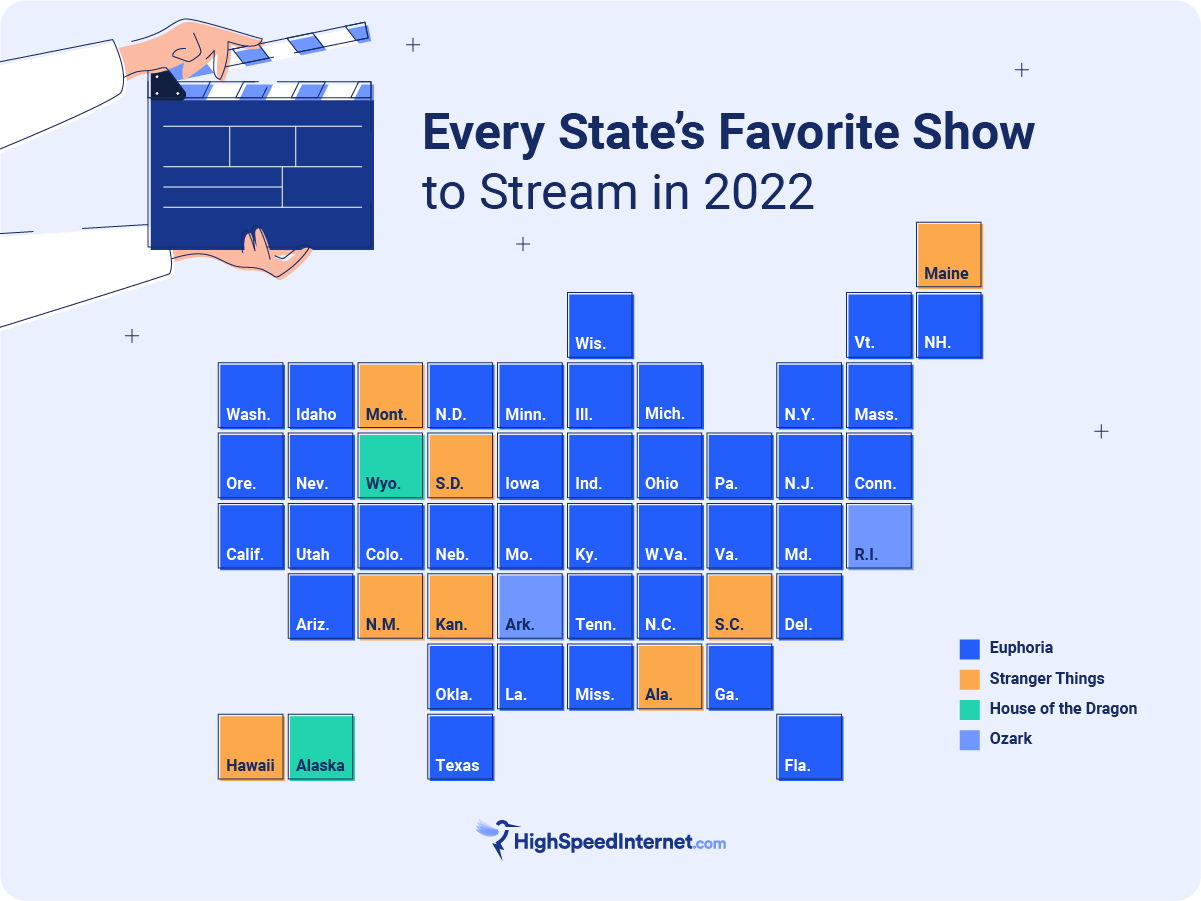
‘We have never been happier!’ Euphoria was #1
The most popular show in the US was Euphoria. HBO’s show was a favorite in 38 states. Created by Sam Levinson and starring Zendaya, Euphoria averaged 16.3 million viewers for its most recent season in 2022. Its viewing stats made it HBO’s second-most-watched show since 2004.2
- Euphoria was the most popular show on the West Coast.
- The season finale drew 6.6 million viewers to HBO and Max, while the premiere hit 19 million viewers at the end of ten weeks.2
- In our ranked-choice analysis, Euphoria was in the top three in 45 states.
- Vermont, Massachusetts, and North Dakota were the states most obsessed with Euphoria.
Euphoria was so popular this year that it beat all past competition, including Manifest (23 states in 2021) and The Umbrella Academy (17 states in 2020 and 45 million viewers in 2019).
Stranger Things have happened…
Are we living in the Upside Down? Netflix’s Stranger Things was not the most popular show in Indiana—but it did claim that title in eight other states. Turns out that the people of Hawkins are more popular outside of Indiana. With the fourth season of Stranger Things releasing supersized episodes in two parts this summer, viewers tuned in and streamed 1.352 billion hours (yes, with a b) of the show in its first 28 days.3
- The season 4 release of Stranger Things scored the largest ever viewership for an English-language series on Netflix and more than doubled the watch hours from Bridgerton season 2.3
- Utahns moved on from Stranger Things to Euphoria after binge watching the Netflix hit last year.
- Far from Hawkins, Stranger Things was the most popular show in Hawaii.
- While North Carolina and North Dakota are Euphoria stans, South Carolina and South Dakota both prefer the spooky vibes of Stranger Things.
- The most obsessed states over Stranger Things were Montana, Maine, and Hawaii.
- We weren’t surprised to see Netflix rank second this year. After all, Netflix has faced subscriber difficulties all year.
We’re moving from the Ozarks into the House of the Dragon
Netflix’s Ozark ended its series run in April, and MAX’s House of the Dragon began just a few months later in August. The shows characterized the battle between MAX and Netflix for TV supremacy, with both shows finding popularity in two states each.
- House of the Dragon set a record with its premiere episode, hitting nearly 10 million viewers, making it the most-watched MAX series premiere ever.4
- According to Nielsen data, viewers streamed 387 million hours of Ozark over its two most-watched weeks.5
- Folks in Rhode Island and Arkansas really liked Ozark in its final season.
- Wyoming and Alaska were truly obsessed with House of the Dragon this year.
Can your internet keep up with streaming both shows? Find out with our speed test.
Most popular shows by state
Four shows—and two streaming services—dominated our lists this year. Although there were huge hits on Disney+ and other streaming services this year that didn’t make the cut (Ms. Marvel, Only Murders in the Building, and Yellowstone, anyone?), US viewers really stuck to Max and Netflix for their streaming needs.
| Alabama | Stranger Things | Netflix |
| Alaska | House of the Dragon | Max |
| Arizona | Euphoria | Max |
| Arkansas | Ozark | Netflix |
| California | Euphoria | Max |
| Colorado | Euphoria | Max |
| Connecticut | Euphoria | Max |
| Delaware | Euphoria | Max |
| Florida | Euphoria | Max |
| Georgia | Euphoria | Max |
| Hawaii | Stranger Things | Netflix |
| Idaho | Euphoria | Max |
| Illinois | Euphoria | Max |
| Indiana | Euphoria | Max |
| Iowa | Euphoria | Max |
| Kansas | Stranger Things | Netflix |
| Kentucky | Euphoria | Max |
| Louisiana | Euphoria | Max |
| Maine | Stranger Things | Netflix |
| Maryland | Euphoria | Max |
| Massachusetts | Euphoria | Max |
| Michigan | Euphoria | Max |
| Minnesota | Euphoria | Max |
| Mississippi | Euphoria | Max |
| Missouri | Euphoria | Max |
| Montana | Stranger Things | Netflix |
| Nebraska | Euphoria | Max |
| Nevada | Euphoria | Max |
| New Hampshire | Euphoria | Max |
| New Jersey | Euphoria | Max |
| New Mexico | Stranger Things | Netflix |
| New York | Euphoria | Max |
| North Carolina | Euphoria | Max |
| North Dakota | Euphoria | Max |
| Ohio | Euphoria | Max |
| Oklahoma | Euphoria | Max |
| Oregon | Euphoria | Max |
| Pennsylvania | Euphoria | Max |
| Rhode Island | Ozark | Netflix |
| South Carolina | Stranger Things | Netflix |
| South Dakota | Stranger Things | Netflix |
| Tennessee | Euphoria | Max |
| Texas | Euphoria | Max |
| Utah | Euphoria | Max |
| Vermont | Euphoria | Max |
| Virginia | Euphoria | Max |
| Washington | Euphoria | Max |
| West Virginia | Euphoria | Max |
| Wisconsin | Euphoria | Max |
| Wyoming | House of the Dragon | Max |
Viewers tend to stick to a few streaming platforms—and most also keep their subscriptions with Netflix, Max, or both. What does that mean for the future of streaming? It’s hard to say. A few years ago, there was no Max (although two of this year’s popular streaming shows come from the linear network HBO) and we focused solely on Netflix shows. Times sure have changed.
Meanwhile, Disney+ is gaining subscribers, and Discovery+ is poised to merge with Max in the coming months. Hulu, Peacock, and Paramount+ have strong corporate backing, while Apple TV+ and Amazon Prime Video have deep pockets to spend on content.
Streaming services will continue to pour billions of dollars into content and advertising, so who knows what this list will look like next year. But we do know that people will keep streaming, and they’ll need internet speed to keep up with the drama.
Methodology
We analyzed the most popular shows on streaming services using Google Trends between 11/2/2021 and 11/2/2022, to discover which shows people in each state searched for the most in 2022. We used Top 10 show data from FlixPatrol to determine the top 4 most popular shows of the year for analysis.
Sources
- Michael Schneider, Variety, “Peak TV Tally: According to FX Research, A Record 559 Original Scripted Series Aired in 2021,” January 14, 2022. Accessed November 16, 2022.
- Jennifer Maas, Variety, “‘Euphoria’ Is Now HBO’s Second-Most Watched Show Behind ‘Game of Thrones’,” February 28, 2022. Accessed November 16, 2022.
- Nellie Andreeva, Deadline, “‘Stranger Things’ Season 4 Final Viewership Comes Within Less Than 300M Hours Of ‘Squid Game’ Record,” August 2, 2022. Accessed November 16, 2022.
- Selome Hailu, Variety, “‘House of the Dragon’ Episode 10 Sees 9.3 Million Viewers, Biggest HBO Season Finale Since ‘Game of Thrones,’” October 24, 2022. Accessed November 16, 2022.
- Selome Hailu, Variety, “Jeffrey Dahmer Series ‘Monster’ Debuts on Nielsen Top 10 With 10th Biggest Streaming Week Ever,” October 20, 2022. Accessed November 16, 2022.
Disclaimer
This content was produced by HighSpeedInternet.com and is in no way sponsored, endorsed, or administered by, or associated with any of the brands or properties mentioned.
We learned in our streaming survey that 80% of Americans use Netflix. In 2021, Netflix reaches over 190 countries worldwide—so what is the world searching for on the top streaming service?
After gathering a list of the top Netflix shows, we analyzed a year’s worth of global search volume to find the top shows in every country (where data was available). Have you seen your country’s favorite show? Or is your favorite show capturing the attention of other countries?
Top Netflix shows by country count
Some shows were beloved regardless of borders, and Peaky Blinders blew past the majority of the competition, along with Netflix’s Stranger Things and Riverdale.
Netflix show| Number of countries with top searches for each show | |
|---|---|
| Peaky Blinders | 24 |
| Stranger Things | 15 |
| Riverdale | 8 |
| Sex Education | 4 |
| Enola Holmes | 2 |
| Outlander | 2 |
| Schitt's Creek | 2 |
| Ultraman | 2 |
| Cobra Kai | 1 |
| Death Note | 1 |
| El Chapo | 1 |
| Glow | 1 |
| Imposters | 1 |
| Kingdom | 1 |
| Legacies | 1 |
- Peaky Blinders on Netflix caps the competition, taking top viewership in 24 countries, including New Zealand, Iceland, Lithuania, France, and Belgium. The sixth season resumed filming in January 2021, so fans may be watching in anticipation of its near-future release.
- Netflix’s Stranger Things, releasing its fourth season this fall, is still a huge fan favorite for 15 countries.
- Rounding out the top three, Riverdale released its fifth season in January 2021. The not-so-innocent teen drama was a favorite in seven countries including Austria, Costa Rica, Moldova, and Panama.
- In Canada and the United States, the top show was Schitt’s Creek, which released its award-winning final season in 2020.
- Eleven countries in the world revved up with the “romance-heavy” teen shows Riverdale and Sex Education.
- Australia keeps on kickin’ it with Cobra Kai, which is now in its third season.
What are the most-searched shows worldwide?
Tommy Shelby and the gangsters of Peaky Blinders built their brutal business in Birmingham, but they took over the globe with the most searches overall.
| Netflix title | Searches* |
|---|---|
| Peaky Blinders | 2,280,600 |
| Cobra Kai | 1,500,000 |
| Stranger Things | 1,131,180 |
| Enola Holmes | 1,000,000 |
| El Chapo | 823,000 |
| Riverdale | 779,200 |
| Sex Education | 444,600 |
*Top show average monthly searches for the past 12 months (Feb 2020–Feb 2021).
Four shows captured over a million average searches every month: Peaky Blinders, Cobra Kai, Stranger Things, Enola Holmes. While the first three shows took home the most searches in various countries, Enola Holmes won one giant audience with its fans in India, helping it rise to the top search ranks globally.
Here’s the complete list of the most popular Netflix shows globally (listed in alphabetical order by country):
Sign up for our newsletter. Get more from your internet.
Have a better, faster, more secure experience with your internet.
By signing up, you agree to our Privacy Policy & Terms and Conditions.
Each country’s favorite Netflix show
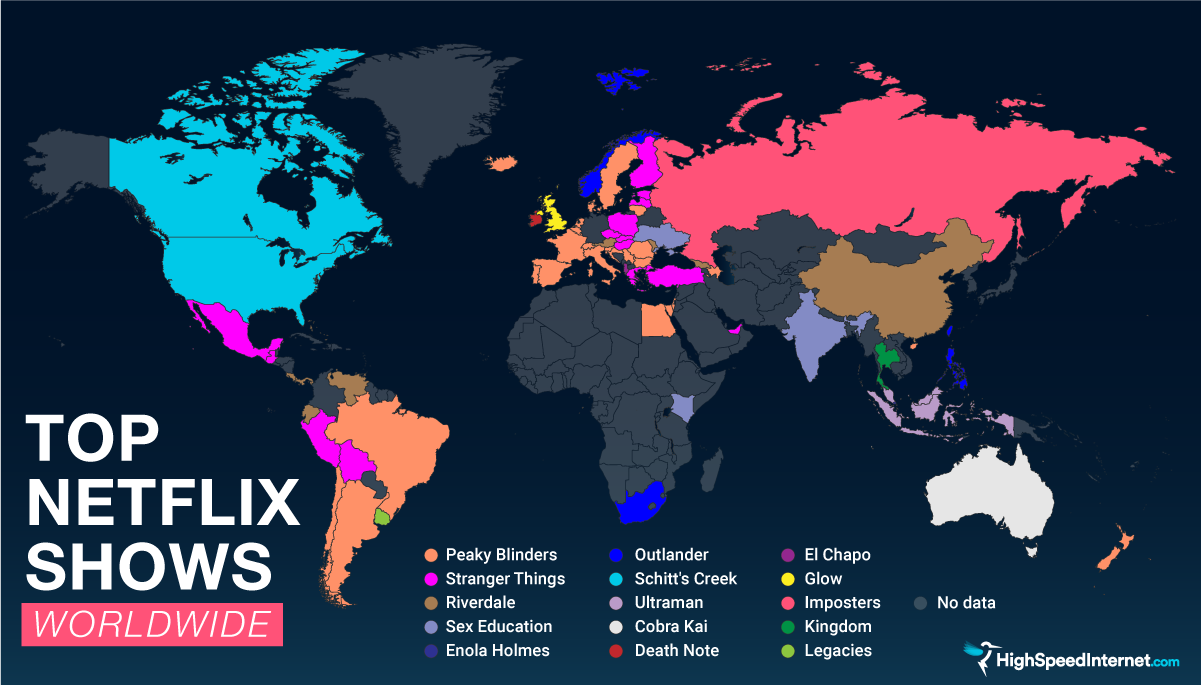
*Top show average monthly searches for the past 12 months (February 2020 through February 2021).
Methodology
We gathered our list of Netflix shows from Flix Patrol (a third-party Netflix search engine), filtering out any shows released before 2011. Using Google’s keyword planner, we analyzed the average monthly search volume over the past 12 months (February 2019 to February 2020) across the globe.
The data excludes 70 countries where data was unavailable or unsubstantial. These territories are primarily in Africa, Asia, and Central America.
Come November 12, Disney+ might be the most stacked streaming service out there—especially if you buy the Hulu and ESPN+ bundle. But is it good enough to ditch your Netflix subscription?
At HighSpeedInternet.com, we surveyed 400 Americans about their streaming habits. A whopping 60% said they would keep Netflix over Disney+ if they had to choose between the two.

Two streams are better than one
Spoiler alert: you don’t have to choose one over the other. Thank goodness. Over 70% of those surveyed already have two or more streaming options, so adding a third service is just a drop in the bucket.
In our survey, 69% of Americans say they think content is more important than price when it comes to choosing streaming services.
The Disney+ base plan costs $8 per month, and to bundle in Hulu and ESPN+, you’re looking at $15 per month—not bad at all.
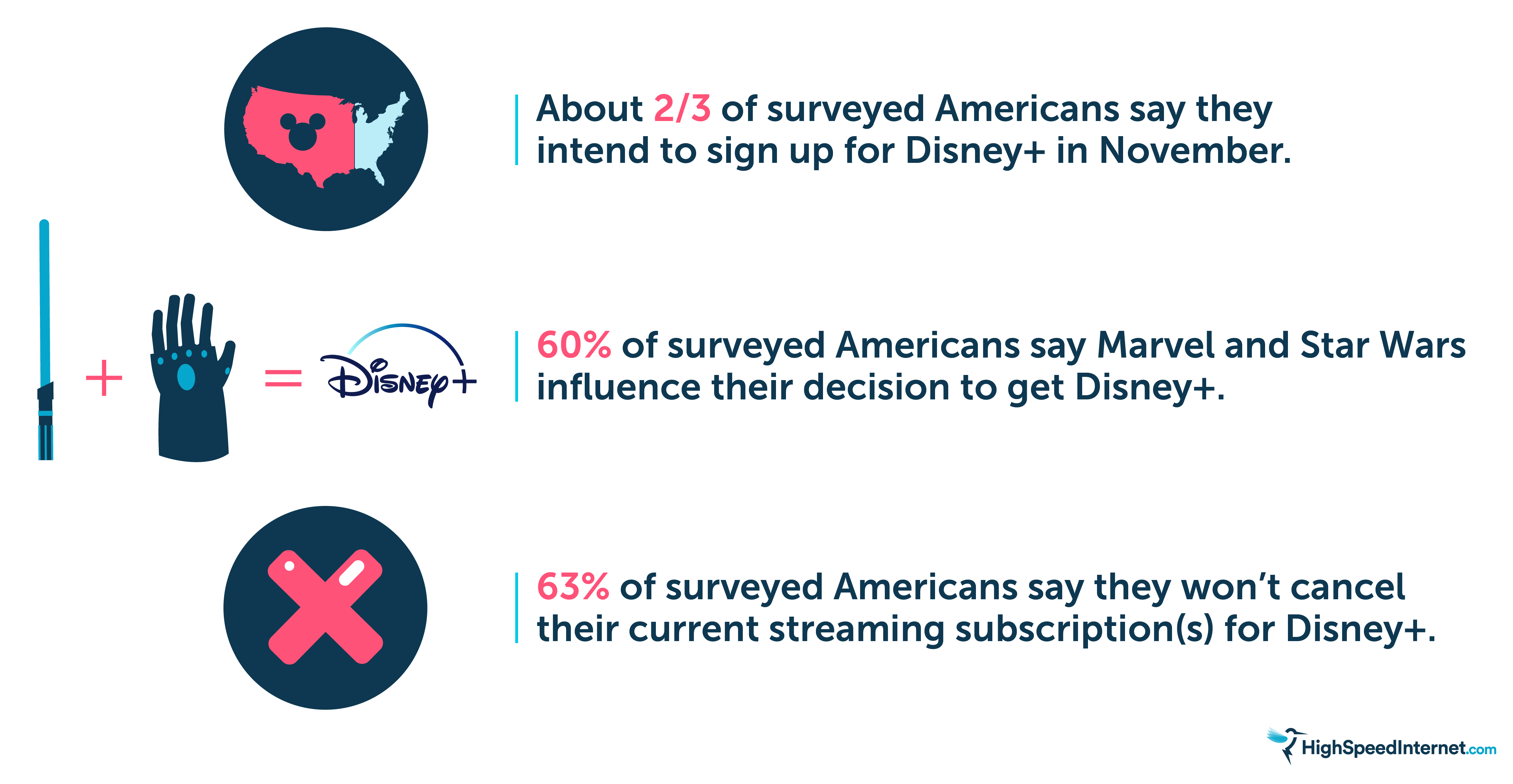
The average live TV package is around $65 or more per month. Most of the Americans we surveyed said they spend between $11 and $20 per month on streaming services.
So what’s one more streaming service for $6 or $12 a month compared to a cable or satellite TV package? It’s chump change for all that you get.
Adding more than Disney to your mix
About 67% or two-thirds of surveyed Americans say they will sign up for Disney+ in November. That’s no surprise to us. Disney+ is getting a ton of exclusive content that’s hard to pass up.
Disney+ is like The Avengers of family entertainment: You’re getting shows and movies from Disney, Pixar, Marvel, Star Wars, and National Geographic. And they even managed to wrangle in all 30 seasons of The Simpsons.
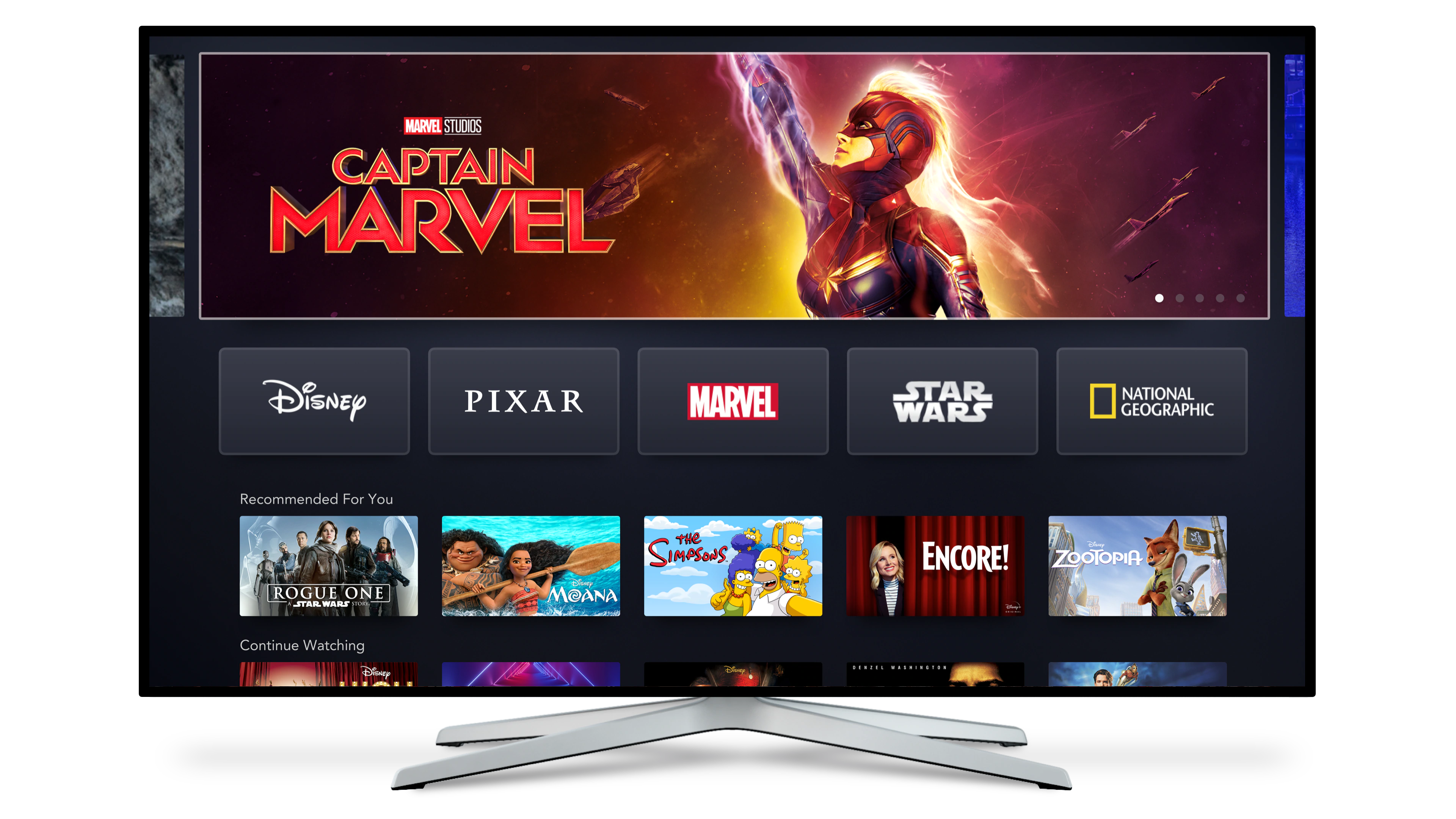
Image © Disney
Including all of that content is going to pay off for Disney. Of those surveyed, 60% of those planning to sign up for Disney+ say Marvel and Star Wars content influenced their decision. We can’t blame them.
But with so much good stuff in the pipeline, what are we most excited about with Disney+? Well, besides the absolute glory that will be The World According to Jeff Goldblum, we’re stoked for the following shows:
- The Mandalorian: A new Star Wars series that will give us all the bounty-hunter action we want.
- Muppets Now: We like Muppets any time, especially now.
- A Lizzie McGuire reboot: Hilary Duff, if you’re reading this, hit me up.
The future of Disney+ and Netflix
It’s clear people remain loyal to Netflix. But they’re also willing to pay to bring other streaming services on board too.
Disney+ will certainly give Netflix a run for its money, but we don’t see Netflix dropping out of the race any time soon. For now, it looks like we’ll be subscribing to both services.
Methodology
HighSpeedInternet.com surveyed 400 Americans on their opinions and thoughts regarding their current streaming services and Disney+. We then compiled a report to summarize the findings.
PS Vue offers a comprehensive channel selection, but YouTube TV is more affordable. Which is right for you?
Jump to: Packages and pricing | Shows and movies | Devices | Resolution | Simultaneous streaming | Advantages and disadvantages | FAQ
-
Good channel selection
-
Tons of supported devices
-
Higher price than competition
The bottom line
PlayStation Vue is a highly compatible streaming service, with nearly every popular platform and device supported. That’s especially good for families with a bunch of different devices. The only real downside we found during our PlayStation Vue review is the price: it’s a little more expensive than other services.
YouTube TV is one of the most affordable streaming services. It provides a good number of channels and unlimited DVR storage that stores your shows for nine months. Throw in the exclusive original shows, which PS Vue lacks, and YouTube TV is a solid streaming choice. Just be aware of the lack of HBO® and somewhat limited device compatibility.
 |  |
Price $44.99–$79.99/mo. | Price $72.99/mo. |
Live channel count 113 | Live channel count 100+ |
On-demand content Yes | On-demand content Yes |
Resolution/quality 720p | Resolution/quality 1080p |
Multiple streams Up to 5 devices | Multiple streams Up to 3 devices |
DVR + storage Unlimited | DVR + storage Unlimited |
| Start Your Free Trial | Start Your Free Trial |
 | Price $44.99–$79.99/mo. |
 | Price $72.99/mo. |
 | Live channel count 113 |
 | Live channel count 100+ |
 | On-demand content Yes |
 | On-demand content Yes |
 | Resolution/quality 720p |
 | Resolution/quality 1080p |
 | Multiple streams Up to 5 devices |
 | Multiple streams Up to 3 devices |
 | DVR + storage Unlimited |
 | DVR + storage Unlimited |
 | Start Your Free Trial |
 | Start Your Free Trial |
Packages and pricing
Free trials
Both PlayStation Vue and YouTube TV offer free trials that let you get a taste of the service before deciding if you want to commit.
- PlayStation Vue: 5 days
- YouTube TV: 7 days
If you try one of the services and decide you don’t want it, just make sure you cancel before the trial period ends. Otherwise the plan will automatically bill you for the regular service.
Now let’s look at your plan choices and what you’ll pay after your free trial is up.
PlayStation Vue packages
| Pricing | Channels | ||
|---|---|---|---|
| Access | $44.99/mo. | 45+ | |
| Core | $49.99/mo. | 65+ | |
| Elite | $59.99/mo. | 85+ | |
| Ultra | $79.99/mo. | 85+ |
| Access | |
| Pricing | $44.99/mo. |
| Channels | 45+ |
| Core | |
| Pricing | $49.99/mo. |
| Channels | 65+ |
| Elite | |
| Pricing | $59.99/mo. |
| Channels | 85+ |
| Ultra | |
| Pricing | $79.99/mo. |
| Channels | 85+ |
Data effective 01/16/19. Offers and availability subject to change.
PlayStation Vue offers a streamlined plan selection. The basic Access plan gets you all the standard channels, and each plan beyond that adds a specific set of additional channels. Core adds sports, Elite adds movies and news channels, and Ultra adds premium channels (like HBO and SHOWTIME).
During our PlayStation Vue review, we also found that it’s one of the more expensive streaming services, considering the number of channels you get. The Access package, for example, is about $1.00 per channel. That’s a little pricey compared to YouTube TV’s $0.67 per channel. The Core and Elite plans offer a better value.
Check out the full PlayStation Vue channel list.
YouTube TV packages
| Pricing | Channels | |
|---|---|---|
| $72.99/mo. | 100+ |
| Pricing | $72.99/mo. |
| Channels | 100+ |
Data effective 01/16/19. Offers and availability subject to change.
YouTube TV is even simpler: there’s only one package, so your choice is already made. And it’s a pretty good deal. We would like to see a little more variety in pricing schemes to hone in on the channels you really want. But we can’t complain too much because there are some additional networks you can add à la carte for varying monthly fees. These include SHOWTIME, STARZ, NBA League Pass, and AMC Premiere.
Check out the full YouTube TV channel list.
TV shows and movies
Original series
Original shows and movies from providers is a hot thing right now, and YouTube is all over it. It has its own lineup of YouTube Originals available for YouTube TV (and YouTube Premium) subscribers.
Here are some of YouTube’s best original series right now:
- Cobra Kai
- Rhett and Link’s Buddy System
- Mind Field
- Step Up: High Water
- Youth and Consequences
PlayStation Vue currently doesn’t offer original programming, but we’ve heard rumors that Sony (the company behind PlayStation) may be cooking something up. Considering Sony Pictures is a major player on the big screen, we’d be surprised if it doesn’t release anything original for the PlayStation Vue service.
On-demand shows and movies
Both providers offer on-demand shows and movies. Much like with cable, which content is available and when it’s available depend on the individual networks you’re subscribed to. Since PS Vue and YouTube TV are pretty straightforward “cable replacement” services, it’s not surprising that they work the same as cable. But it’s kind of a bummer when other options like Hulu have such robust on-demand libraries.
Live channels
YouTube TV has fewer channels overall, but you get all of them with the single $40.00 package. With PlayStation Vue, you have to step up to the $49.99 Core plan to get a similar number of channels.
In terms of selection, they’re pretty similar. The one big omission (and it’s a big one) is YouTube TV lacks HBO. You can always get a separate HBO NOW subscription for your Game of Thrones fix, but it’s just not as convenient as having it all in one platform.
In terms of local channels, what you’ll get really depends on where you live. To see exactly what channels are available for you, hop over to the PlayStation Vue and YouTube TV channel lists and enter your zip code.
Compatible devices
| PlayStation Vue | YouTube TV | |
|---|---|---|
| Amazon Fire TV | ✓ | ✘ |
| Roku | ✓ | ✓ |
| Apple TV | ✓ | ✓ |
| Chromecast | ✓ | ✓ |
| Roku TV | ✓ | ✓ |
| PlayStation 3 | ✓ | ✘ |
| PlayStation 4 | ✓ | ✘ |
| Android Mobile | ✓ | ✓ |
| Android TV | ✓ | ✓ |
| iPhone | ✓ | ✓ |
| iPad | ✓ | ✓ |
PlayStation Vue is one of the most compatible streaming services available. It’s hard to find a device it doesn’t work on. YouTube TV is pretty robust, too, but there are a couple big omissions from the list, namely Amazon Fire devices and PlayStation consoles. If you’re planning to watch on one of those devices, you’ll have to go with PS Vue.
Best streaming devices
The device you’re watching on can make a big difference in the experience you have with a service. That’s because each service has its own app, and those apps are often different from one device to another.
Usually, we recommend either Apple TV (for the Apple fans) or Amazon Fire TV (for everyone else). While Apple TV is still a good option with these two streaming providers, Amazon’s platform won’t work with YouTube TV. If you aren’t interested in Apple TV but want YouTube TV, go with Roku instead. It’s affordable, comes in several variations—including a streaming stick format—and works with most major services.
Cloud DVR
PlayStation Vue and YouTube TV each offer unlimited cloud DVR storage for any shows or movies you want to save for later. And yes, it’s truly unlimited (there are a lot of unlimited fakers out there these days).
But there’s one difference that puts YouTube TV way ahead of PS Vue here. That’s how long you can keep your recordings:
- PlayStation Vue: 28 days
- YouTube TV: 9 months
If you forget about a recording with PlayStation Vue, it might get purged before you remember to watch it. With YouTube TV, that’s not really a concern—unless you’re the type that forgets things for months.
Resolution and quality
| Resolution | |
|---|---|
| PlayStation Vue | 720p |
| YouTube TV | 1080p |
YouTube TV pulls ahead on resolution, delivering shows and channels at up to 1080p. PlayStation Vue maxes out at 720p, which is ok for smaller screens but might become noticeable on larger TVs.
Recommended internet speed
While you don’t necessarily need gigabit speeds to enjoy streaming TV, you’ll want a fast and stable connection to really get the most from your service and see less of those buffering icons of doom.
- PlayStation Vue: Aim for at least 10 Mbps, plus another 5 Mbps for each additional stream beyond the first.
- YouTube TV: YouTube TV recommends at least 13 Mbps for the best experience.
Multiple streams
Simultaneous streaming is an essential feature that allows you to stream video from one account on multiple devices at the same time. It makes it possible for you to catch the game in the living room while your spouse hits the Key and Peele reruns in the bedroom.
- PlayStation Vue allows 5 simultaneous streams.
- YouTube TV gives you 3 simultaneous streams.
The YouTube multiple-stream limit is a little confusing because YouTube TV gives you six “accounts” with each subscription to share with others as part of a family or group. But even though there can be six accounts, the entire family or group shares the three-device limit—regardless of which account the devices are used on. That could get a little tricky to coordinate if you’ve got a bunch of TV lovers.
Advantages and disadvantages
Advantages
- Good channel selection
- Unlimited DVR storage
- Tons of supported devices
Disadvantages
- 28-day DVR storage limit
- Higher monthly cost
- Lower picture quality
Advantages
- Excellent streaming quality
- Unlimited DVR storage
- Affordable pricing
Disadvantages
- Only one package
- Lower channel count
- Less device compatibility
It’s all about the originals.
Picking from these two services comes down to one question: do you value original programming? PlayStation Vue has a lot going for it, but it doesn’t have original series. If that’s important to you, go with YouTube TV—you won’t be disappointed. Otherwise, PlayStation Vue is a safe bet for almost anyone (as long as you’re not too concerned about the picture quality).
Which streaming provider did you decide to go with? Leave us a comment and let us know.
FAQ about PlayStation Vue and YouTube TV
Do I need a PlayStation to watch PlayStation Vue?
Nope! Despite the name, there’s no PlayStation required for PlayStation Vue—it works on all the major platforms. In fact, it’s one of the most compatible streaming services around.
What’s the difference between YouTube TV and YouTube Premium?
Good question. The two services are actually entirely separate.
YouTube TV is a livestreaming service, meaning you get to watch programs as they air, just like regular cable TV.
YouTube Premium is a service that adds several features to “regular” YouTube:
- Removes ads from YouTube and YouTube Music
- Allows you to download content for offline use
- Allows videos to continue to play in the background on your mobile devices
- Gives you access to YouTube Originals
When will 4K come to HBO NOW?
HBO NOW doesn’t support streaming in 4K resolution right now. The network says it’s looking into it, so we’re hopeful for the future. Game of Thrones in Ultra HD? Yes, please.
Curious about other streaming services? Check out our streaming guides.
Don’t get caught in a buffering cliffhanger. Compare internet speeds and prices near you.
Edited by Cara Haynes
Amazon Prime is famous for its two-day shipping, but Prime also comes with several lesser-known benefits—including some excellent streaming services at no additional charge.
If you’ve ever wondered if a Prime subscription is worth it, or if you’re curious about what shows you can get with an Amazon Prime Video subscription, wonder no longer. We’ve put everything you need to know about an Amazon Prime subscription in one place.
Jump to the following sections:
How much does Amazon Prime cost?
Amazon Prime comes in three subscription options: Prime Video, Prime Monthly, and Prime Yearly. Here’s a breakdown of each:
$8.99
If you just want more streaming options, Prime Video is the simplest way to go. All you’ll pay for is video—nothing more, nothing less.
$12.99
Prime Monthly is the full Amazon Prime subscription, with all its bells and whistles, billed monthly. Paying monthly costs more over the course of a year than the Prime Yearly subscription, but it’s a nice option if you want to shell out less cash at once or if you’re wary of annual commitments.
$99.00
Prime Yearly is the traditional Amazon Prime subscription, billed yearly. This gets you all the same benefits as Prime Monthly, but you’ll save money by paying for a full year in advance.
For frequent Amazon shoppers, it’s very possible to make up the entire cost of your Amazon Prime membership in shipping savings, which makes all the additional Prime benefits just icing on the cake.
Shopping around for new internet?
Enter your zip code below to see which providers are available in your area.
Amazon Prime Streaming
Prime Video
Prime Video is Amazon’s answer to Netflix and Hulu. It’s an online video streaming service that works on Android, iOS, smart TVs, and a variety of streaming boxes. Like its competitors, it features tons of content, including some award-winning original programming.
Prime Video offers both movies and TV shows. While its library isn’t quite as extensive as the Netflix library, it’s getting there, and the original programming Amazon puts out is catching up. Here are some of the best movies and TV shows on Amazon right now:
Amazon also offers 4K streaming at no additional charge, so you can enjoy your favorites in gorgeous Ultra HD. It also integrates wonderfully with Echo and Alexa, allowing you to call up your favorite titles with just your voice.
Prime Video can be streamed on Amazon Fire TV Stick, as well as most other streaming boxes:
Prime Video vs. Netflix
Compared to streaming-favorite Netflix, Prime Video offers slightly less content overall. However, it does have better children’s programming and a stronger comedy lineup. Amazon’s original programming is also catching up to Netflix, with critically acclaimed titles like The Marvelous Mrs. Maisel. So, if you can afford it, get both subscriptions. The content is different enough that it’s worth it.
Check out our comparison of Amazon Prime Video and Netflix for the full rundown.
Prime Video vs. Hulu
Prime Video and Hulu are a little more similar. They both offer live TV, and they have slower rotation cycles for content. What that means is that TV shows and movies are added less frequently than on Netflix, but they’re also removed less frequently. This can be either good or bad, depending on how quickly you tend to get through a show. Hulu does offer several popular shows that you’ll also find on cable, like This Is Us, Bob’s Burgers, and Brooklyn Nine-Nine. Plus, if you’re into streaming music, Spotify now offers a great deal for bundling with Hulu.
What else can you get with an Amazon Prime subscription?
You get a lot. For starters, a Prime subscription includes discounted fast shipping, exclusive access to deals and savings, streaming services for audio and video, access to the Kindle Owners’ Lending Library, and plenty more.
We’ll tell you what you need to know about each feature, with a special emphasis on the streaming services offered by Amazon.
Amazon Prime Membership Features
- Free shipping
- Prime Pantry
- Prime Now
- Savings, deals, and discounts
- Prime Video
- Prime Music
- Prime Photos
- Kindle Owners’ Lending Library
- Video add-on subscriptions
- Thursday Night Football
- Membership sharing
- Amazon Echo and Alexa compatibility
If hands-on research works best for you when it comes to making decisions, try Prime free for 30 days.
Free Shipping
Discounted shipping is probably the best and most enticing benefit of a Prime subscription. Prime members get free two-day shipping on over 100 million eligible items along with heavily discounted next-day shipping on those same items.
And if you’re one of the lucky members in select areas, you’ll get free same-day delivery or free one-day shipping on over one million items. (There are some limitations to this—the order must be over $35.00, for example.) Still, it’s hard to argue with free same-day shipping. This feature is currently available in 8,000 cities across the US.
Prime Pantry
Prime Pantry is a “store” on Amazon that offers Prime members everyday household items and food that might otherwise be too expensive to ship individually. For example, Prime Pantry allows you to order a single cereal box instead of an entire case.
This is a handy feature for non-emergency items you might need regularly, like vitamins, laundry detergent, and diapers. The one caveat to keep in mind is that these orders are not eligible for guaranteed two-day shipping due to their size and weight. Instead, they ship in one to four business days.
Prime Now
Prime Now offers same-day delivery on select items. Customers can also order from local restaurants and shops—restaurant orders are delivered within one hour. Delivery fees vary based on order size, but Whole Foods orders are free (Amazon acquired Whole Foods recently).
This is one of those convenience features you don’t know you need until you’ve tried it. It’s just too convenient to place an order, choose a delivery window, and know that it will arrive exactly when you request it. Although it’s only available in select major cities, Amazon is expanding the list.
Savings, Deals, and Discounts
This is a benefit of Amazon Prime that’s easy to overlook. Prime members get access to special deals on items that non-Prime customers don’t. These include exclusive brands and early access to deals with limited supply. If you’re a true bargain hunter, this is the feature for you.
Prime Music
Prime Music is Amazon’s streaming music service for Prime members. It’s included with your Prime membership at no additional charge. It competes against services like Apple Music, Spotify, and Google Play Music. Prime Music offers curated playlists and radio stations, as well as over two million songs to stream on demand.
If you’re into niche artists, Prime Music offers quite a bit less in terms of raw song count and content. It’ll have most of the popular artists and albums you’re likely to look for, but more obscure genres might be underrepresented.
Amazon Music vs. Prime Music
Prime Music is not to be confused with Amazon Music (though we can totally see how that might happen). Amazon Music is an additional charge of $7.99 per month for Prime members (or $9.99 per month for everyone else). That extra charge gets you access to a much larger content library—over ten million songs—which puts it more in line with Spotify and other competitors.
Prime Photos
Prime Photos gives Amazon Prime members free online storage for their photos. Members—along with up to five family members—can store unlimited photos and order customized gifts and prints.
Photos can be backed up from pretty much any device using free apps. There are apps available for Mac, PC, Android, and iOS. Backed up photos can also be viewed on any device, including Amazon Fire TV and Echo Show. Amazon’s software automatically organizes and arranges your photos, and a great search function lets you find what you’re looking for in a snap.
As for the gifts, options include the usual mugs, calendars, cards, and photo books. Prime members get free shipping on any photo gifts. That also includes expedited shipping on orders over $15.00, so you can nab that last-minute Mother’s Day gift and not go broke getting it shipped in time.
Kindle Owners’ Lending Library
The Kindle Owners’ Lending Library is exactly what it sounds like: Kindle owners get access to a library of books they can “check out” for no additional charge. The library has over 800,000 titles, including best sellers and all seven Harry Potter books.
Amazon Prime customers can borrow one book per month, and the books have no due date—you can take as long as you want to read them. You do have to “return” them before you can borrow another, but any highlights or notes you make are saved on the Amazon Drive in case you want to borrow or buy the book later.
Video Add-On Subscriptions
Prime Video Channel Subscriptions are the Prime equivalent of the premium channels you might get with a cable subscription. They are à la carte channels and streaming networks you can add to your Prime subscription for an additional charge.
Available subscription channels include standard premium networks like HBO®, STARZ®, Paramount+ with Showtime, and CINEMAX®. There are also other networks you can add, like Lifetime Movie Club, PBS Kids, DreamWorks TV, and SI TV.
Check out the full list of available channels here. Prices vary, but premium channels like Paramount+ with Showtime tend to be around $8.99 per month.
Thursday Night Football
Last year, Amazon picked up the rights to stream the 2017 season of Thursday Night Football. This was a well-received move on Amazon’s part, and its largest step into streaming sports yet. After a race earlier this year that involved Amazon, YouTube, Twitter, and Verizon, Amazon won the streaming rights to Thursday Night Football for the 2018 and 2019 seasons, providing yet another compelling reason to pick up a Prime subscription.
Membership Sharing
Amazon Prime members can share certain benefits with other members of their household. This system is known as Amazon Households. You can share Prime Video, shipping benefits, exclusive offers, and other benefits with one other adult (like your spouse). Up to four teenagers in the house can share select benefits as well, and parents can monitor activity on those accounts.
Parents can also set up child profiles for kids under twelve that allow for stricter monitoring and limitations. These child profiles can be restricted to specific parts of Amazon’s digital products, like age-appropriate streaming content and Amazon FreeTime. Child accounts are not allowed to shop on the Amazon store either, so you don’t need to worry about young kids running up your credit card.
Amazon Echo and Alexa Compatibility
The Amazon Echo smart speaker lineup (and its digital assistant, Alexa) are kind of a big deal these days. The smart assistant can help automate all kinds of tasks around the house, and it makes a pretty good music player too. While you don’t necessarily need a Prime membership to use Echo and Alexa, Prime members get access to more features that make the assistant even better.
- Ask Alexa to do your shopping: ask Alexa to order an item, and she’ll take care of the rest. This feature uses your past purchase history to determine the right item to order, and it works really
- Access Prime Music to stream millions of songs without ads. Just ask Alexa to play a song, and you’ll be listening to it in seconds.
- Ask Alexa to track packages and shipments.
- Use Echo Show or Fire TV to display photos from your Prime Photos library.
- Ask Alexa to play your favorite show from Prime Video.
Amazon has thought of everything you could want or need when it comes to running your modern household, and its multibillion-dollar profits show that people are eating it up. If you’re interested in Amazon Prime (and who wouldn’t be after reading all that?), start your 30-day free trial today.
The Best Equipment to Power Your Next Netflix Marathon
Cable may still be king, but the future is streaming. One in five American households has cut the cord and set their TV boxes free, pivoting to embrace streaming providers like Netflix, Hulu, and Amazon Prime. Streaming devices have evolved to meet increasing demand, with smaller, faster models equipped with dazzling new features that put most standard DVRs to shame. We’ll look at the newest crop of streaming boxes and make some recommendations about which models will work best for your next Netflix-and-chill moment.
Our Top 5 Picks for Streaming Devices
| Device | Amazon Rating | Price | 4K | Compatible Apps | |
|---|---|---|---|---|---|
| Best Overall | Apple TV 4K | 4.2/5 | $$$$$ | Yes | Amazon Video, Hulu, ESPN, and Netflix |
| Best Value | Amazon Fire TV | 3.8/5 | $$ | Yes | Netflix, Amazon Video, Hulu, HBO®, Paramount+ with Showtime, STARZ®, and more |
| Best for Gamers | NVIDIA SHIELD TV | 4.1/5 | $$$$$ | Yes | Netflix, Amazon Video, YouTube, VUDU, Google Play, Sling TV, and PlayStation Vue |
| Best Streaming Stick | Roku Streaming Stick+ | 4.4/5 | $$ | Yes | Netflix, Amazon Video, Hulu, VUDU, Sling TV, and PBS KIDS |
| Best of the Rest | Google Chromecast Ultra | 5/5 (Google Rating) | $$ | Yes | Netflix, HBO NOW, Google Play, YouTube, Plex, Spotify |
| Best Overall | |
| Device | Apple TV 4K |
| Amazon Rating | 4.2/5 |
| Price | $$$$$ |
| 4K | Yes |
| Compatible Apps | Amazon Video, Hulu, ESPN, and Netflix |
| Best Value | |
| Device | Amazon Fire TV |
| Amazon Rating | 3.8/5 |
| Price | $$ |
| 4K | Yes |
| Compatible Apps | Netflix, Amazon Video, Hulu, HBO®, Paramount+ with Showtime, STARZ®, and more |
| Best for Gamers | |
| Device | NVIDIA SHIELD TV |
| Amazon Rating | 4.1/5 |
| Price | $$$$$ |
| 4K | Yes |
| Compatible Apps | Netflix, Amazon Video, YouTube, VUDU, Google Play, Sling TV, and PlayStation Vue |
| Best Streaming Stick | |
| Device | Roku Streaming Stick+ |
| Amazon Rating | 4.4/5 |
| Price | $$ |
| 4K | Yes |
| Compatible Apps | Netflix, Amazon Video, Hulu, VUDU, Sling TV, and PBS KIDS |
| Best of the Rest | |
| Device | Google Chromecast Ultra |
| Amazon Rating | 5/5 (Google Rating) |
| Price | $$ |
| 4K | Yes |
| Compatible Apps | Netflix, HBO NOW, Google Play, YouTube, Plex, Spotify |
*Data effective as of 1/9/2018
We’ll get to the details on these snazzy streaming devices soon, but first let’s chat about considerations. What features are important when choosing a streaming box? Our answers will help you identify the device you’ve been looking for.
What should I consider when choosing a streaming device?
Box vs. Stick
Streaming devices fall in two basic categories: small and smaller. Your choices are either a larger streaming box that’ll probably fit in the palm of your hand or a smaller streaming stick, which is comparable in size to a USB memory stick. While sticks lack some of the processing power and port options of a streaming box, these tiny memory-stick devices are cheap and portable. If, however, you’re interested in streaming 4K HD or you have a full theater setup that utilizes Dolby Audio, you’ll want to stick (pun intended) with a streaming box instead.
Compatibility
While you can download most streaming apps onto any device, there are some clear advantages to using a box that integrates your favorite streaming content provider. For example, if your favorite shows are available on Amazon Video, you may want to consider the Amazon Fire TV rather than the Google Chromecast because the latter is geared toward Netflix and Google Play. When it comes down to it, the ease of use and the ability to find content quickly will outweigh any potential cost differences.
4K Ultra HD
Got a fancy new 4K Ultra HDTV? Then you need a streaming device that will allow you to stream 4K programming. All the devices we recommend support 4K streaming so you can make the most of the magnificence of your sixty-inch TV screen.
Internet Speed
If you’re investing in streaming technology to cut the cord with your cable provider, internet speed should be part of your calculations. How much speed do you need to stream effectively? It depends on the number of your devices, what type of content you are streaming, and how much of it. To get a better idea of the internet speeds we suggest for your connected household, use our How Much Speed Do You Need? tool.
Making Connections
For a speedy, seamless streaming experience, you want to pay attention to things like how many bands your device supports and the Wi-Fi protocol it’s using. Optimally, you want 802.11 ac protocol and a dual-band device that utilizes MIMO to optimize your signal performance. Not sure what all that tech speak actually means? Learn more about internet protocols in our router equipment guides.
Additionally, if you have a home theater, make sure the device you select has all the ports you’ll need. Many of the less expensive streaming boxes do not support sophisticated audio outputs.
Internal Storage
If you’re living your life in the cloud, storage capacity may not be an issue for you. A few streaming devices offer some storage capacity, so you can have content at your fingertips without worrying about connectivity. While even the largest storage capacity on a streaming device is still vastly smaller than the average DVR, if you want more, opt for a device that has a USB port so you can connect external storage.
Top 5 Streaming Devices
#1: Apple TV 4K
Best Overall
Type: Box
Compatible Apps: Amazon Video, Hulu, ESPN, Netflix, and more
4K HD: Yes
Band: Dual
Connections: HDMI 2.0a, Gigabit Ethernet, IR Receiver, Wi-Fi
Storage: 32 GB, 64 GB
If you want the best picture possible on a streaming device, Apple TV 4K is the way to go. It’s more expensive that most of the other devices on this list, but if you want the best, you have to pay for it. Apple TV 4K comes in two varieties: 32 GB and 64 GB. We recommend opting for the 64 GB version because it gives you twice the storage capacity for only about 10% more money.
#2: Amazon Fire TV (with 4K Ultra HD and Alexa Voice Remote)
Best Value
Type: Box
Compatible Apps: Netflix, Amazon Video, Hulu, HBO®, Paramount+ with Showtime, STARZ®, and more
4K HD: Yes
Band: Dual
Connection: HDMI output, micro USB for power or optional Amazon Ethernet Adapter, Wi-Fi
Storage: 8 GB
While the Amazon Fire TV doesn’t have the same storage capacity as the Apple TV 4K, it’s less than half the price and still delivers a 4K HD picture. Along with being a great bargain, it also includes an Alexa Voice Remote that lets you control your TV experience with spoken commands. The Amazon Fire TV even has a version that includes an HD antenna so you can watch and record shows broadcast over the air. However, the built-in antenna will increase the price by about 20%.
#3: NVIDIA SHIELD TV
Best for Gamers
Type: Box, gaming system
Compatible Apps: Netflix, Amazon Video, YouTube, VUDU, Google Play, Sling TV, and PlayStation Vue
4K HD: Yes
Band: Dual (2.4 GHz only)
Connection: Ethernet, HDMI, 2 USB, Wi-Fi
Storage: 16 GB
Don’t be scared off by the larger price tag! NVIDIA SHIELD TV gives you so much more functionality than most streaming devices. NVIDIA SHIELD TV integrates with Google products and more. You can use it to play games from cloud storage, cast games from your PC to your TV, and even control your Nest system for home automation. It does all that and more, while still delivering amazing picture quality.
#4: Roku Streaming Stick+
Best Stick
Type: Stick
Compatible Apps: Netflix, Amazon Video, Hulu, VUDU, Sling TV, and PBS KIDS
4K HD: Yes
Band: Dual
Connection: USB, Ethernet, Wi-Fi
Storage: External (microSD)
If you’re not worried about storage and want a more “stream”-lined device, the Roku Streaming Stick+ is for you. It’s compatible with the major streaming services, and the newest version has 4K HD capability to keep your picture super clear. It’s also less expensive than the bigger boxes, so you might be able to afford subscribing to more streaming services.
#5: Google Chromecast Ultra
Best of the Rest
Type: Stick
Compatible Apps: Netflix, HBO NOW, Google Play, YouTube, Plex, Spotify
4K HD: Yes
Band: Dual
Connection: Wi-Fi, Ethernet, HDMI
Storage: External (microSD)
The Chromecast Ultra is proof that great things can come in small packages. While it may be small, the Ultra packs plenty under the hood with the ability to stream in 4K and support for HDR. While it’s a little pricier than the base model, if you’re a cord-cutter looking for HD content, the Chromecast Ultra is the best way to keep you supplied with a steady stream at a budget price.
4K HD requires more bandwidth than standard HD
All the streaming devices we recommend in this article are 4K HD compatible. Higher-resolution images, like those you get with 4K HD, require more digital information to keep the image sharp. To get the most out of your streaming device without causing a noticeable slowdown in your internet speed, you’ll need an internet connection with more bandwidth to accommodate that extra data.
With 4K HD becoming the new standard for top-quality streaming, many Internet Service Providers (ISPs) offer higher-bandwidth connections. To find ISPs in your area and see the speeds (bandwidth) they offer, enter your zip below.
Streaming has made watching TV better than ever before in terms of widespread availability and the sheer quantity of shows. Millions of people are logging in to their streaming services daily, but you might be surprised to know what they’re watching!
Our team at HighSpeedInternet.com conducted an online survey to discover the best shows on Netflix, Hulu, Amazon Video, and HBO. Read on to see the most-popular shows by streaming service, age group, and gender.
Shopping around for new internet?
Enter your zip code below to see which providers are available in your area.
FAVORITE SHOWS BY STREAMING SERVICE
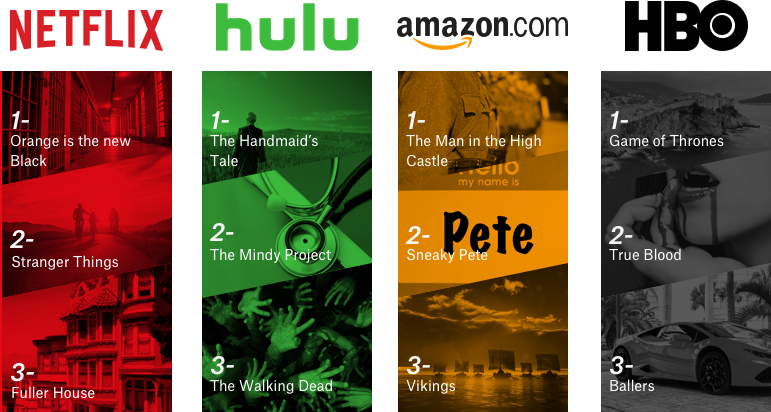
Dramas led the way across the board when it came to popularity, with only Hulu’s The Mindy Project (a romantic comedy), and Netflix’s Fuller House (a sitcom) mixing things up. Furthermore, The Walking Dead and Vikings are the only winners not produced by the streaming service that offers them, making for an impressive array of original shows at the top of the ranks.
FAVORITE SHOWS BY AGE RANGE
Sorting our data by age groups, we start to see a much wider range of preferences. Netflix’s Orange Is the New Black and HBO®’s Game of Thrones are the only shows appreciated across the whole range of age groups.
In the 18-24 age range, survey respondents often preferred shows with an element of comedy, such as Shameless, Rick and Morty, Girls, and Sex and the City. Their taste was also the most individualized, with six shows at the top of their list that showed up in no other group’s list.
The next age range, 25–34-year-olds, also listed many comedies, including Shameless, The Mindy Project, and Ballers. And it’s no surprise to see they enjoyed the nostalgia of Fuller House, a reboot of a childhood favorite sitcom.
Respondents from the 35–44 age range showed an overwhelming preference for dramas, including the old favorite The Sopranos. They also showed the most appreciation for shows with a fantastical element, like Stranger Things, The Walking Dead, The Handmaid’s Tale, The Man in the High Castle, and True Blood.
Finally, the 45–54 age range showed eclectic tastes, including simple pleasures like America’s Got Talent and The Big Bang Theory, crime dramas Narcos and Bosch, musical drama Empire, and science-fiction dramas like Stranger Things, The Walking Dead, and The Man in the High Castle.
Favorite Amazon Video Shows by Age Range
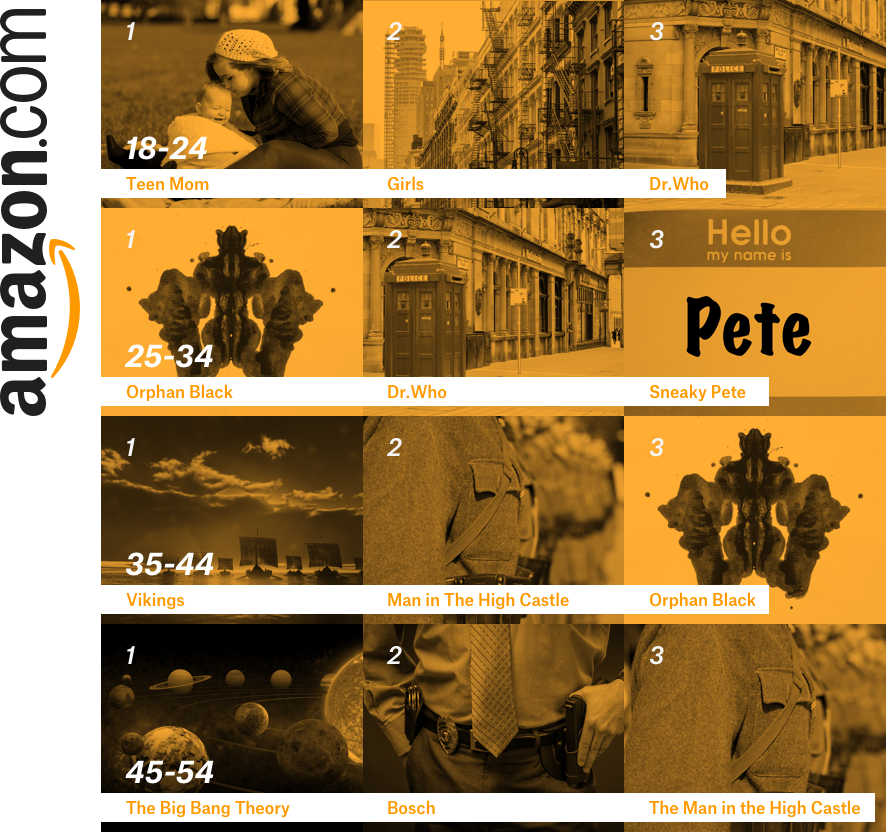
Favorite HBO NOW® Shows by Age Range

FAVORITE SHOWS BY GENDER
There was wide variation in favorite shows by gender, with only Orange Is the New Black and Game of Thrones showing up in the top three for both men and women.
Women showed more interest in shows like Fuller House, Orphan Black, and The Handmaid’s Tale, which are all primarily lead by women. On the other hand, men showed more interest in gritty sci-fi shows like The Walking Dead, West World, and The Man in the High Castle.
Favorite Netflix Shows by Gender
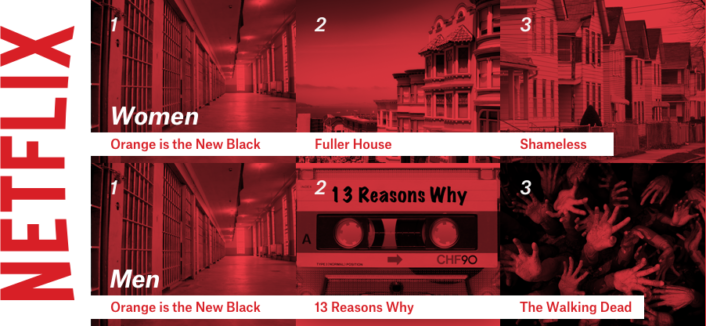
Favorite Hulu Shows by Gender
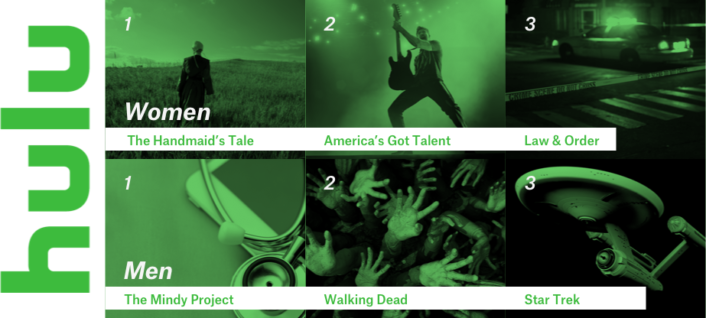
Favorite Amazon Video Shows by Gender
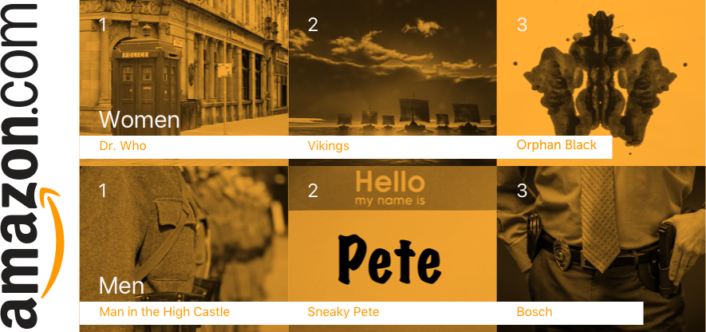
Favorite HBO NOW® Shows by Gender

Are you surprised by the lineup of the top shows to stream online, or was it what you expected? Share your reactions in the comments below.
Also See:
https://www.highspeedinternet.com/resources/should-streaming-be-called-netflixing/
